Uncovering The £30 Million Art Scam WIN£1,000!

Must-See Christmas Markets 10

Uncovering The £30 Million Art Scam WIN£1,000!

Must-See Christmas Markets 10

Ford C- MAX Zetec with Navigation, Premium Paint, Rear Parking Sensors and Active City Stop from only £NIL* Advance Payment. To find out more, visit ford.co.uk/motability o r call 0345 60 40 019.
Official fuel consumption figures in mpg (l/100km) for the Ford C-MAX range: urban 33.6-65.7 (8.4-4.3), extra urban 54.3-80.7 (5.2-3.5), combined 44.3-74.3 (6.4-3.8). Official CO2 emissions 149-99g/km.
The mpg figures quoted are sourced from official EU-regulated test results (EU Directive and Regulation 692/2008), are provided for comparability purposes and may not reflect your actual driving experience.
*Nil Advance Payment available only on Ford C-MAX Zetec 1.6 125PS. Navigation System and Active City Stop subject to availability. Exclusive body colours are not included, but are available at additional cost. No cash alternatives are available. This programme is subject to the standard conditions of the Motability 3-year lease agreement. Full written details and quotations available on request from a Ford Authorised participating Dealer of Motability Operations Limited. Motability Scheme vehicles are leased to customers by Motability Operations Limited (Registered Company No. 1373876), City Gate House, 22 Southwark Bridge Road, London, SE1 9HB. To qualify you must be in receipt of the Higher Rate Mobility Component of Disability Living Allowance (DLA), the Enhanced Rate Mobility Component of Personal Independence Payment (PIP), the War Pensioners’ Mobility Supplement (WPMS) or the Armed Forces Independence Payment (AFIP) and applications must be made with participating dealers between 1st October to 31st December 2017. Prices are correct at time of print, are subject to availability and may change.
The
The actress opens up about her fear of the camera Health
Discover the new treatments that mean osteoporosis doesn’t have to be a dire diagnosis Inspire

76 100-W ORD -STORy COMPETITION
Have you entered yet? Your story could win you £1,000!
travel & a dventure
80 TIME IN A BOTTLE
We travel to Austria to meet the winemakers who are reestablishing the Old World
90 EUROPE’S BEST CHRISTMAS MARKETS
From Strasbourg to Tallinn, the must-see festive fairs
102 CAN THE PANDA BE SAvED?
Sing your heart out at these special events
In China, experts are working around the clock to ensure the panda roams free

IT’S HARD TO BELIE vE THAT IT’S THE END O f 2017—and even harder to believe that it was a full two years ago that the first British astronaut set off to the final frontier. With his feet firmly back on Earth, Major Tim Peake has written a book about the secrets of space (including what it smells like!). We chat to him on p22 about the biggest day of his life—and how it dramatically shifted his perspective.
Did you know that it’s also 17 years since the giant panda was officially declared an endangered species? The conservation efforts in China are reaching a final frontier of their own; captive breeding is a success, but now these magnificent creatures must be released back into their own environment. Will they survive? Learn more on p102.
Of course, we can’t reach the end of the year without a nod to Christmas, so we explore Europe’s best festive markets on p90. We wish you a very happy Christmas—and look forward to seeing you next year!

Fiona hicks
theeditor@readersdigest.co.uk
facebook.com/readersdigestuk
twitter.com/readersdigestuk

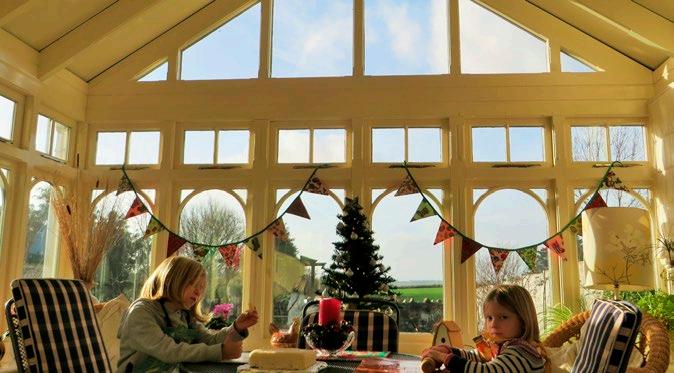


EDITOR-IN-CHIEF Fiona Hicks
ASSOCIATE EDITOR Anna Walker
CULTURE
EDITOR Eva Mackevic
All commercial services provided by: SUBSTANTIVE MEDIA LTD 0203 795 8886
Mike Allen | mike.allen@readersdigest.co.uk
Kerry Schofield | kerry.schofield@readersdigest.co.uk
Sarah Hughes | sarah.hughes@substantivemedia.com
ART EDITOR Richard Cooke
GENERAL MANAGER Gavin Suen
TRUSTED MEDIA BRANDS INC (USA)
President and Chief Executive Officer
Bonnie Kintzer
Vice President, Chief Operating Officer, International Brian Kennedy
Editor-in-Chief, International Magazines
Raimo Moysa
WE PAY...
£50 for the star letter and £30 for regular letters.
Email readersletters@readers digest.co.uk or go to readers digest.co.uk/contact-us
WE ALSO PAY...
£50 for the true stories, anecdotes, jokes in Laugh! and You Couldn’t Make It Up…, and contributions to end-ofarticle fillers and My Great Escape
Email excerpts@readersdigest.co.uk or go to readersdigest.co.uk/contact-us
We cannot acknowledge or return unpublished items or unsolicited article-length manuscripts. Do not send SAEs. Article-length stories, poetry and cartoons are not requested.
Contact Customer Services for renewals, gifts, address changes, payments, account information and all other enquiries. Call 0330 333 2220* or email customer_service@readersdigest.co.uk
Reader’s Digest is also available in audio and accessible etext editions from RNIB Newsagent, for blind and partially sighted readers. Call the RNIB Helpline on 0303 123 9999 or visit rnib.org.uk/newsagent
Visit readersdigest.co.uk or write to: Reader’s Digest, The Maltings, West Street, Bourne, PE10 9PH. UK: £45.48 a year. Republic of Ireland: €61.20 a year. Prices include delivery. For gift subscriptions, contact Customer Services.

Forget socks...eight celebrities reveal what they really want for Christmas. From Benedict Cumberbatch’s wish for more magic to Jarvis Cocker’s plea for some cashmere pants, you’ll be surprised and delighted at what makes their lists. Now for the real question: have they been naughty or nice? readersdigest.co.uk/celebrity-santa
Your seasonal survival kit
Don’t let winter ailments ruin the most wonderful time of the year. Caught the sniffles? Nursing a hangover? Kids home for the holidays and giving you a headache? Or are you just feeling the bloat from all that Christmas pud? We’ve got the solution. Visit readersdigest. co.uk/one-stop-christmas-health-survival-kit
twitter.com/readersdigestuk



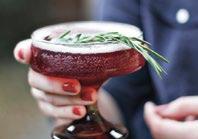


facebook.com/readersdigestuk
Indulge in these recipes and more at readersdigest.co.uk/ christmas-cocktails
She’s six. She has her whole life ahead of her. Unless she’s thirsty…


Nancy lives in Tombohuaun, Sierra Leone and loves to sing and dance. When she’s not playing and making mischief with her friends, she likes to help her mum, perhaps, like many other six-year-olds you know.
Three times a day, Nancy helps to collect heavy buckets of water, which are filled with parasites and bacteria. She’s too young to understand why drinking it makes her sick.
Every day her mum, Fatu, fears for Nancy’s life and she has good reason to worry—Nancy’s sister recently died from drinking unclean water. She was only five years old at the time.
Fatu would do anything to stop dirty water killing Nancy. You can help her Today, almost 800 children like Nancy will die needlessly from drinking dirty water. That’s one child every two minutes.
Your support can help bring clean water to children like Nancy, assisting the building and maintainence of the wells, pumps and taps they so desperately need.
Together, we can bring clean water and beaming smiles to children like Nancy ■
Text LIFE to 70060 to give £3 today
Give today and your donation will be doubled by the UK Government
Charity donation service. Texts cost £3 plus standard network rate message. WaterAid receives 100% of the donation. By texting you consent to text and phone contact about our work and what you can do to help. Text ‘LIFE NO’ to donate and stop future fundraising calls and texts. Queries: 020 3282 7862.
WaterAid Privacy Policy: For more information, go to wateraid.org/uk/privacy
The UK Government will match to a maximum of £5 million to WaterAid’s Untapped appeal. Donate before 31/01/18 and your first 3 regular gifts will be doubled at no extra cost to you.
Registered charity numbers 288701 (England and Wales) and SC039479 (Scotland).
L e TT ers on TH e o CTo B er I ss U e
We pay £50 for Letter of the Month and £30 for all others
As someone who’s experienced lifelong problems with anxiety and depression, I was very interested in “Choose the Path to a Happy Life”. Unsurprisingly, my score on the emotional intelligence quiz confirmed I need to work on my emotional self-discipline and control—traits that are controlled to an extent by long-term medication and, more recently, mindfulness techniques.

This article was fascinating in its discussion of the wider effects of emotional intelligence. The standout benefit for me is in the legacy we can give to children in all walks of life. If, by honing our emotional intelligence and effectively transferring those skills to young people, we can raise happier, healthier and more productive adults, we owe it to everyone to embrace this latest thinking.
ANN JOHNSON, CheshireI was interested to read Katie Stone’s account of her trip to Iceland to see the Aurora in “My Great Escape”. When we first moved to Shetland nine years ago, it was always one of our dreams to see the Northern Lights, known locally as the “Mirrie Dancers”. As a designated Dark Sky
area, Shetland is one of the best places in the UK to see them. Yet for the first few years we always seemed to miss them, usually hearing about them a day too late. Even when using notification apps, we had no luck.
A couple of years ago, on a particularly starry February night, we happened to be driving home when
we saw the sky light up. Standing on our doorstep, we looked directly north and we were treated to a tremendous display. It seemed as if the sky were alive as the lights whirled and danced across the expanse of dark—we couldn’t tear our eyes away and we didn’t know where to look next. We spent several hours watching the display, immune to the cold and craning our necks upwards to enjoy the show.
It was reported the next day that this was the best showing in the UK for several years. For our first time seeing the Aurora in person, it was a real treat and one we’ll never forget.
KeViN BRiggS, ShetlandHaving read the interview with Emily Mortimer, “Who Really Knows Anything?”, I was disgusted to see that the interviewer classed her as “a quintessential English rose”. When did anyone else classed as such use bad language with such gusto? If she and her language are typical of other English “stars” in America, then it’s no wonder that American film producers portray all English people as foul-mouthed, ignorant louts.
dAVid WOOd, West MidlandsI enjoyed “I Remember” and thought Jennie Bond’s memories of life in a convent school were refreshing—not all nuns are harsh and cruel. The nuns in my school were excellent teachers; disciplinarians certainly, but humorous and forgiving.
SHAuN gARdNeR, BristolThank you for sharing “A Tale of Three Magical Children”. For too long autism has remained a taboo subject, but thankfully attitudes are beginning to change. The other day I heard a woman telling her husband in the supermarket, “You shouldn’t judge because you don’t know if the child is autistic,” after he made a comment about what he saw as a “badly behaved child”. The more people share their stories, the more we can build a society that’s understanding.
We need to remember that many Irish nuns (and most of them were Irish) did not have a vocation to enter the church. Families were extremely poor and, with very little income, parents’ only option was for daughters to marry or enter a convent. In those days young men were reluctant to wed and perpetuate the hopeless existence of their parents.
PHiLiPPA SAMPSON, Devon



































 Foto: © Getty Ima G es/juanlu I s duran
Foto: © Getty Ima G es/juanlu I s duran

turn the page
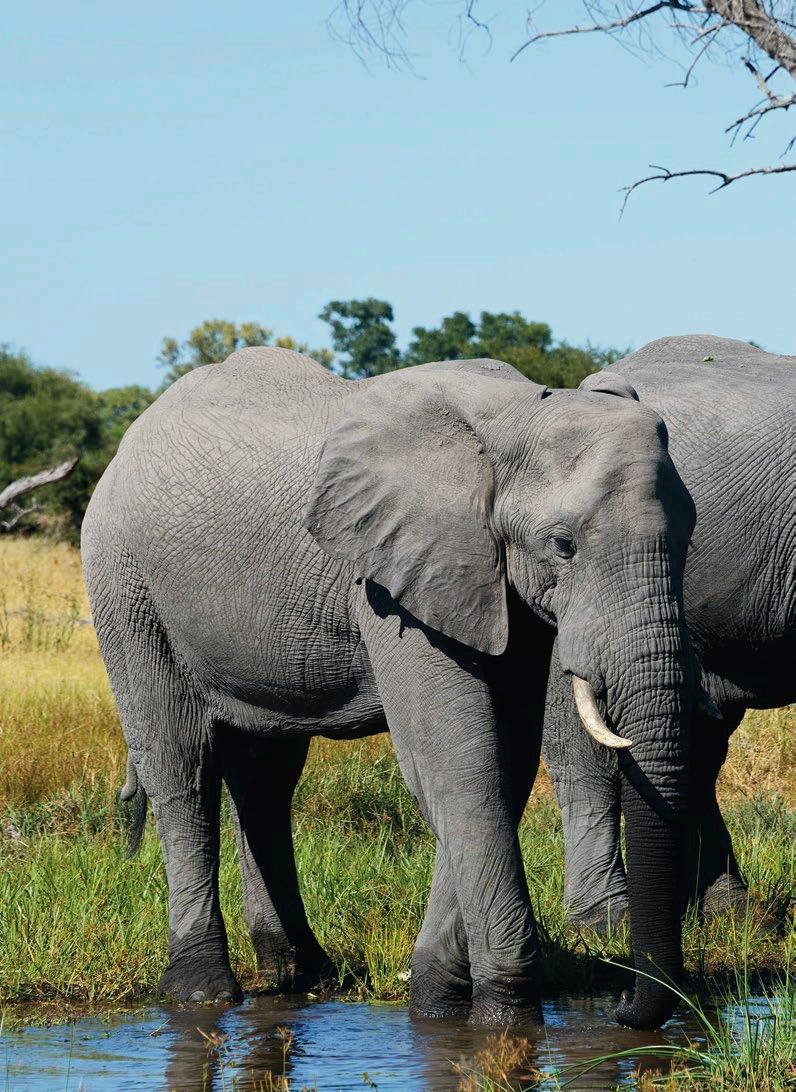

elephants are, in every sense of the word, grand animals! as adults they can grow up to four metres tall, consume roughly 400kg of food each day and weigh as much as seven tons.
their trunks also act as an extraordinary, multi-functional organ with which they can smell, feel, grab and move things. these highly intelligent mammals can also use their trunks to console other stressed or scared members of their herds.

Olly Mann appreciates the finer points of a weekend break at Center Parcs

Olly Mann presents Four Thought for BBC Radio
4, and the award-winning podcasts The Modern Mann and Answer Me This!
BACK IN 2005, I WAS A RESEARCHER ON THE ITV SERIES THIS MORNING. I was charged with putting together an item about the trend for “staycations”, and the revival in British holiday camps. I say “trend”, but as far as I recall we didn’t have any data demonstrating more people were remaining in the UK for their holidays—still less that they were flocking to Burnham-on-Sea to watch the Bluecoats. I suspect my producer just wanted to re-broadcast those wonderful archive films of knobbly knees competitions and the Minehead Monorail.
Anyway, one of my tasks was to call up the holiday companies and ask them for some contemporary footage to accompany the discussion—the big waterslides being built at Butlin’s, the “luxury” bungalows being pimped-up at Pontins, that sort of thing. My producer suggested we should include Center Parcs, too, so I called their press office and requested some similar material. I was met with hesitation. “Um, we’re not really a holiday camp,” said the lady from the press office. “We’re a forest villa village.”
THIS DISTINCTION STRUCK ME AS ABSURD. As a child, my sole experience of British holiday camps had been a 1980s trip to a (now derelict) Warner’s holiday park, where underemployed club comedians unconvincingly attempted family-friendly material as their audience devoured the
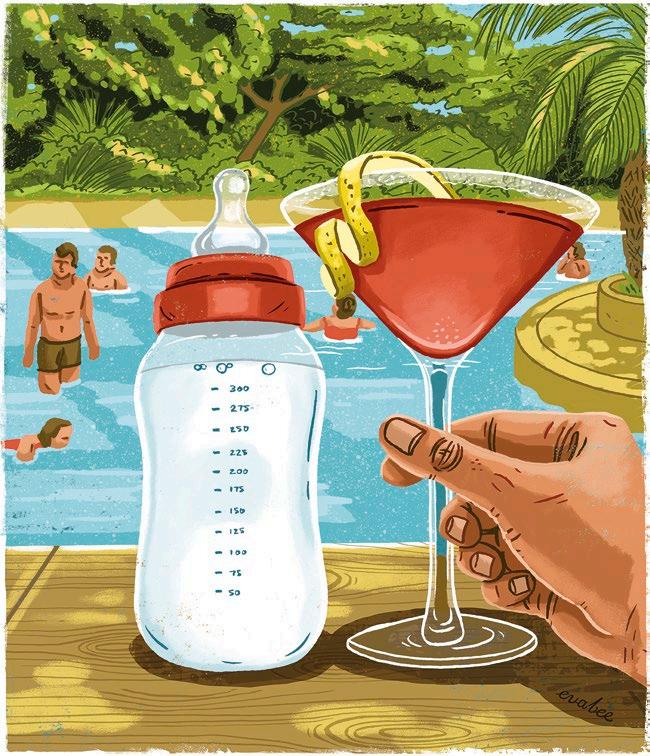
all-you-can-eat pasta buffet. It was fun, but it certainly wasn’t sophisticated. The idea that any holiday camp— sorry, “village”—should wish to be seen in a more upmarket light utterly bemused me. Surely, I thought, if
holidaymakers could afford something more luxurious, they’d just go abroad?
Fast-forward to 2017, and here I am, writing this column from the patio of my three-bed “executive
lodge” at Center Parcs Woburn Forest. In front of me is a charming woodland view—or at least, that’s the impression; in fact there’s a cluster of neighbouring lodges cunningly concealed within it. There’s a barbeque to my left and (implausibly, since we’re in Bedfordshire) a sauna to my right— both reserved for our exclusive use. We’re sharing the lodge with friends, who’ll split the bill with us, but it’s not exactly cheap: by the time we’ve covered our activities and food, this weekend will cost around £1,000. And this is our second trip to Center Parcs this year.
You see, when my son was born, travelling became rather challenging. Packing to take a one-year-old on holiday is like preparing for battle. It’s a little easier now we no longer sterilise his bottles, and he eats the same food we do, but still—he requires too many toys and trinkets and clothes to be casually compressed into a cabin-size suitcase for a weekend away. It’s worth the effort for a big annual holiday—just—but the idea of properly packing all his stuff together just for a mini-break is
unconscionable. It’s much easier to chuck everything in the car.
The clever thing about Center Parcs is you can drive right up to your chalet—sorry, villa…sorry, executive lodge—then park outside, dump your luggage, and put your wine in the wine cooler. (Yep, there’s a wine cooler. Take that, Butlin’s!)
However, aside from unloading, cars are prohibited, so you then wake up in the park —sorry, village— with a sense of fresh forest air, and not a vehicle in sight: even the cleaning staff commute about on bicycle. That’s relaxing, not least because your kids can run, scoot or cycle without fear of running into a motor.
Packing to take a one-year-old on holiday is like preparing for battle—he requires too many toys and trinkets and clothes
THING—the really clever thing, much more important than all the admirable nonsense they promote about outdoor adventures and family bonding and holistic therapies—is that they have a lot of bars. After all, when British adults want to let their hair down, they like to have a drink; and when they want to keep their kids alongside them, there are very few advisable places to go.
At Center Parcs, I’ve observed, playgrounds and pubs are almost
always paired; sometimes to the extent that it’s hard to decipher if you’re drinking in the soft play in the Sports Bar, or the sports bar in the Soft Play. It’s liberating to heat up baby bottles and buy a lager shandy in the same venue, all while enjoying the bucolic benefits of feeding baby owls or treetop pony rides or whatever it is you’re supposedly doing.
Then there’s the heated swimming pool—sorry, “Subtropical Swimming Paradise”. I don’t quite know why it is that, 25 years after Center Parcs first landed in Britain, these biodome-type structures haven’t been widely
imitated all across the country. It’s heated to 29.5C, so you can parade about in your swimming trunks, in the middle of winter, without concern that your toddler will shiver to death. Oh, and there’s a poolside bar, too. Ready-mix cocktails! Try finding that in your local leisure centre.
I realise I sound like an alcoholic now. But it’s not just the wine cooler and the pubs and the cocktails that make it a good holiday, I promise. It’s what all that booze represents: a break that’s been designed to make adults and kids feel good at the same time. I’ll drink to that.
Tidbits to make your day that little bit more interesting:
The ampersand symbol is formed from the letters in et—the Latin word for “and”.
When Disneyland opened in 1955, “Tomorrowland” was designed to look like a year in the distant future: 1986.
The German word kummerspeck means excess weight gained from emotional overeating. Literally: grief bacon.
In the Eighties, Pablo Escobar’s Medellín Cartel was spending $2,500 every month on rubber bands—just to hold all their cash.
Sea cucumbers eat with their feet.
In 1907, an advertising campaign for Kellogg’s Corn Flakes offered a free box of cereal to any woman who would wink at her grocer.
Fredric Baur invented the Pringles can. When he passed away in 2008, his ashes were buried in one.
SOURCE: MENTALFLOSS.COM
It’s only a matter of weeks until Christmas is upon us and most people looking to move house are shifting their focus from selling their property to preparing for the big day

Did you know, despite the run-up to christmas, you could still complete the sale of your home before December 25?
A growing number of sellers are now selling their properties quickly by finding a guaranteed buyer. How? By using a professional property buying service. What’s more, if you utilise one now you could easily have the money for your property in the bank by Christmas.
Professional property buyers use cash funds to quickly purchase property. Often, property is bought within two weeks of making an offer—although some can complete a sale in less than a day. They can also provide peace of mind for the seller with a guaranteed offer in cash.
The companies have their own funds readily available and are experienced at buying property, which is why they can act so quickly. In return, you can expect to receive an offer that is slightly under market value—although many of these companies cover your solicitor expenses and don’t charge any fees for using their service. The speed at which they can act means using a professional property buyer often works out as a very competitive way to sell your property—as well as saving you time and offering a relatively stress-free alternative to an estate agent. n
If you would like to find out more about using a professional property buyer, contact Reader’s Digest Property on 0800 4337979 or visit readersdigestproperties.co.uk

■ comedy: the disaster artist Tommy Wiseau had one dream: to become a movie star. But nobody in Hollywood would cast him in a film. So he made his own—and it went down in history as the worst film ever made. The Room gained a cult following worldwide and James Franco’s awkwardly hilarious and uproariously entertaining The Disaster Artist tells the story of how it was made. It portrays Wiseau with kindness and purity and remains lovingly loyal to the spirit of The Room: the actors mimic their original counterparts with unflinching (if painful-to-watch) authenticity. Yet no one surpasses James Franco as Wiseau himself: unrecognisible with his long black hair, facial prosthetics and Eastern European accent, he really gets his method acting on.

■ drama: molly’s game Master of fast-paced dialogue Aaron Sorkin strikes again with this wry crime drama about Molly Bloom—a real-life Olympic-class skier who, following a career-ending accident, got involved in the seedy world of illegal gambling and became an FBI target. Starring Jessica Chastain as the titular Molly, Kevin Costner as her demanding father and Idris Elba as a lawyer with a heart of gold.
■ biography: the man who invented christmas Dan Stevens is Charles Dickens in this vibrant, fairy-tale-like story of how one of the best-loved novellas of all time, The Christmas Carol, came to be. It’s got everything you’d expect from a Dickens biopic: witty dialogue, larger-than-life characters, and Christopher Plummer as Scrooge. Yet it’s Stevens who steals the show with his feverish energy and boyish charm.
 Movie of the Month by e va mackevic
Movie of the Month by e va mackevic

■ Family: wonder No amount of cynicism will arm you against shedding a tear at this film. Wonder is a sweet and moving story of Auggie (superbly played by Jacob Tremblay)—a boy with facial differences who enters the dogeat-dog world of school for the first time. Though heavy-handed at times, it’s a film with a timeless message at its heart: when faced with a choice between kindness and being right, always go with kindness. Plus, Julia Roberts and Owen Wilson make a great film couple.

■ action: star wars: the last jedi In the latest instalment of the epic space opera, Rey (Daisy Ridley) continues her journey with Finn (John Boyega), Poe (Oscar Isaac) and Luke Skywalker (Mark Hamill), having taken her first steps into a larger world in Star Wars: The Force Awakens. It’s an emotionally loaded and visually stunning epic that boasts a star-packed cast as well as the final performance of the late Carrie Fisher. Questions will be answered, lightsabers will be wielded, epic battles will be fought.

On Your Radar: Joanna, dog psychologist
Watching: only Fools and horses (Uk gold) I know it by heart but find myself putting it on when I need cheering up. Classic feelgood comedy.
reading: thunder dog by michael hingson A moving read about a blind man and his guide dog, which helped him in the 9/11 attacks.
online: bbc news I love keeping up-todate with the current affairs. I also like to keep track of new findings on dog behaviour and interaction.
liStening: classic Fm
I enjoy all types of music but being a classically trained pianist, I especially like to unwind to Classic FM.
Fancy appearing in this section? Send your current cultural favourites, along with short descriptions, to readersletters@readersdigest.co.uk
Fancy appearing in this section? Send your current cultural favourites, along with short descriptions, to readersletters@readersdigest.co.uk
goin’ Platinum! by robert
Finley by e va mackevic Album of the MonthBlues fans, you’re in for a treat. Goin’ Platinum! is a godsend for ears thirsty for some timeless, unadulterated vocals wrapped in tight, plucky rock ‘n’ roll jangles. The former is provided by Robert Finley—a phenomenal singer who, forced to retire from carpentry when he lost most of his eyesight, re-emerged on the music scene at 63. His current sound is courtesy of one of the hottest names in contemporary blues-rock—The Black Keys’ Dan Auerbach, who produced and co-wrote this record. Together, they form an explosive duo that’ll make your bones tingle. Finley’s exquisite, soulful vocals lead a whole host of incredible musicians making Motown-inspired magic on sleek guitars and crisp horns. From the red-blooded “Medicine Woman” echoing the frenzied spirit of Screamin’ Jay Hawkins, to the instrumental insanity of “Complications”, Goin’ Platinum! is a blues feast with all the trimmings.
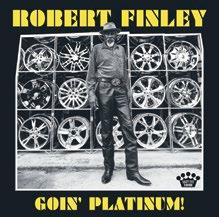

the lanterns at chester Zoo, november 24–december 30. Enter an enchanting world of illumination and theatrical adventure. Visit chesterzoo.org for details.
grassington
dickensian Festival. december 2–10. Let street performers and shopkeepers in Victorian dress take you back in time. Visit grassington dickensian.co.uk for details.
Key tracks: “Medicine Woman”, “Complications”, “Holy Wine”

like thiS? yoU may alSo like... ray charles by ray charles
Finley’s smooth-as-honey vocals will remind you of many soul greats: Otis Redding, Sam Cooke and, of course, Ray Charles. Their shared ability to masterfully control their vocals with what seems like effortless ease is something to marvel at.
burning the clocks, brighton, december 21.
Welcome in the longer days with a gorgeous lantern parade and a fireworks display. Visit visitbrighton. com for details.


Major Tim peake talks to anna Walker about the final frontier
12.55pm, January 15, 2016. Major Tim Peake floats nervously before the Quest airlock of the International Space Station (ISS) with a photograph of his two sons strapped to his left arm. He’s ready to boldly go where no Brit has gone before.
You’ve done years of training. You’ve done virtual reality jet pack flying, you’ve analysed your routes, you’ve studied your procedures,” he explains. “But if you’ve never gone outside of the Space Station in a space suit, you just don’t know what it’s like.”
“Hey, Tim,” radios ISS commander Scott Kelly. “It’s really cool seeing that Union Jack go outside. It’s explored all over the world. Now it’s explored space.”
While most of us might consider the prospect of venturing into an environment where at any moment you could be hit by a micrometeorite—or lose your grip and float into space— just about the most terrifying experience imaginable, Tim remained unshaken.
This is typical of Tim, whose unflappable nature was surely crucial in ensuring his place on the ISS mission—a position he beat nearly 9,000 other hopefuls to secure.
The pair was tasked with repairing a faulty solar panel. After a relatively smooth four hours and 43 minutes— save for a momentary blip when Tim Kopra’s helmet began to fill up with water— they were safely back on-board.
It hadn’t dawned on me how much of a big deal the space walk had been back on Earth
“We had the suits drying out while we got changed and then we had a cup of tea and a biscuit. It was only later when I floated back to my quarters that I saw my inbox: it was inundated. Of course for me it was a huge day. It was the biggest day of my life. But it hadn’t dawned on me how much of a big deal this had been back on Earth.”
“As soon as the air lock opened and [fellow astronaut] Tim [Kopra] and I went outside, a wonderful feeling of relaxation came over me. It wasn’t fear at all, just a case of, Great, now let’s get on with the job that we’ve come here for.”
“Big deal” may be something of an understatement. As Tim floated 240 miles above the Earth’s surface, millions tuned in to watch the first space walk ever conducted by a British citizen.
And the outpouring of national

pride didn’t cease when his mission ended. Far from it.
“I was on a post-flight tour and during that time I answered thousands of questions. I was blown away by the interest so I decided to try and answer people as accurately as I could in my book, Ask An Astronaut.”
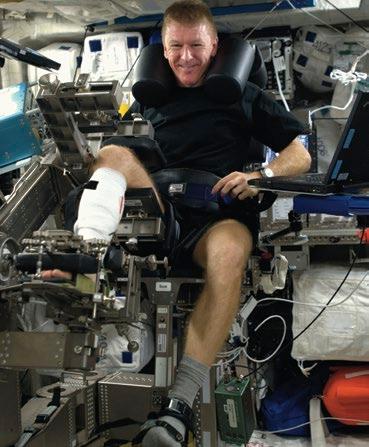
From the serious—What are the long-term health effects of space flight? —to the silly—What does space smell like?—the book covers every curiosity a reader might have about Tim’s six months in space.
“It became a bit of a mammoth task. There was a lot of information out there anyway on my social media so I thought I’d just collate that, do a little extra work and the book would be done.”
He chuckles at his own naivety. “Blood, sweat and tears have gone into this book. It was quite a therapeutic process though. It’s the right time for me to do it, while the mission is fresh in my mind.”
Now 45 and back living on Earth with his wife Rebecca and two sons
Tim rests his eyes in his crew quarters; (right) taking part in a life-science experiment on board the ISS
Oliver and Thomas, Sussex-born Tim remembers where his passion for space began.
“In my early childhood I was fascinated with astronomy, with the stars and all the big questions that my own boys now ask me, like, ‘How far back does space go, Daddy?’ and, ‘Where does it begin and where does it end?’ Really space travel is a quest to try and answer those questions.”
Therapeutic outpourings such as Tim’s Ask An Astronaut project are presumably vital for astronauts readjusting to life on Earth. Six months of looking down at our

home planet inevitably takes a psychological toll. Many cosmonauts have written upon their return of the way that a new perspective on our tiny planet permanently alters the way they perceive their own place in the universe.
Tim found his time in space allowed him to “reflect and see things differently. When you look at Earth from space you see it as a planet, not a mixed-up bag of different continents. You just see the geological features and forget about the political differences. It puts the need to work together and look after our planet into perspective.”
Taking part in a training exercise for his future space walk using a Partial Gravity Simulator and harness
Tim waves farewell along with his fellow astronauts on December 15, 2015, the day he first launched into space

The damage the human race is inflicting upon our planet is another thing it becomes impossible to ignore.
“You come to appreciate the fragility of the earth’s atmosphere. It really is terrifyingly thin.” If the earth were a football, Tim explains, then our atmosphere would be the equivalent thickness of a single piece of paper.
“We can see the impact of pollution from the Space Station. You can see the haze clouds; you can see the deforestation. When you witness it with your own eyes, and you see the
scale of it, you really think about what we’re pumping into our atmosphere.”
reports of tim’s youngest son Oliver sat on his grandfather’s shoulders crying “I want to go with Daddy” were widely circulated upon his departure. Tim considers saying goodbye to his family before launch the hardest thing he’s ever had to do, so he counts himself lucky that Christmas Day came so soon after his arrival in space.
“I’m really glad that it happened less than two weeks after launch. During that time Tim Kopra and Scott Kelly had already done an unplanned space walk so it was busy.
“I think if Christmas had come four months into the mission, when you’re at that low point and really missing friends and family, then it would have been a different story—but I was just still enjoying microgravity and getting to know my way around the station. Keeping busy is your friend in space.”
mission you draw a line and go your separate ways and it’s sad to say goodbye.
“The good news is that it’s a tightknit community so we’re still in touch but I do miss it. It’s a unique place to live and you grow very close.”
So close, in fact, that the crew of the ISS occasionally found time to play pranks. In one memorable hijink, commander Scott Kelly snuck a gorilla suit on-board and cajoled Tim into helping him distract crewmate Tim Kopra so he could hide in his quarters and burst out unannounced.
When you look at Earth from space you see it as a planet, not a mixed-up bag of different continents
Despite the everyday joys of life back on solid ground (“Nothing beats just spending time with family when you come back from a space mission”), Tim still finds himself missing the camaraderie of his International Space Station crew. “When you come down from a
Despite the crew’s easy camaraderie, certain topics stay off limits. “We definitely keep away from politics,” Tim laughs. “We don’t even joke about it. Throughout the majority of my training in Russia we were going through the Crimea crisis and you just can’t let that interfere with what you’re doing. There’s definitely healthy banter whenever a national stereotype comes up though.
“The best nights were Friday nights. We’d go down to the Russian segment and we’d all take some of our bonus food down there. We’d spend the entire evening listening to music and chatting and eating, just enjoying each other’s company.”
Tim lies in gypsum to create the perfect mould for his seat on return spacecraft, the Soyuz
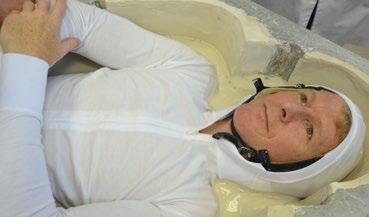
Bonus food makes up around ten per cent of an astronaut’s food allocation, and they can choose anything that will travel to space easily. In a stroke of genius, Tim had his made by legendary chef Heston Blumenthal—Michelin-star space grub.
“It was so funny the first time I was tucking into Heston’s bacon sandwich. Scott was just dribbling at the mouth. I hadn’t quite appreciated how luxurious that was in space.”
On another occasion, Kelly convinced Ground Control to stream the new Star Wars film, The Force Awakens, for an unforgettable movie night, after which Tim “was half expecting to see a TIE fighter when I went to close the window covers.”
for now tim is focused on the next 15 years of space travel, and it’s surprising to learn just how soon his fellow cosmonauts will be leaving the Space Station behind in favour of more ambitious exploration.
“We have a very clear roadmap that takes us to landing on the surface of
Mars in the mid to late 2030s. It’s not hugely in the public domain right now so people don’t realise how close we are, but when you go to NASA you can look at the hardware that’s being built right now ready for the first rocket launches.
“The ISS is 20 next year and that partnership has been rocksteady throughout all the political difficulties that have occurred in that time. In space, we have a unique ability to collaborate.”
Peake is contagiously optimistic when it comes to the future—“it’s no longer a question of if we will colonise the Moon and Mars, but when”—and it’s hard not to feel excited by the possibilities. When you reflect on the political turmoil and upheavals of the world in 2017, it seems as though we could all benefit from a cosmonaut’s sense of perspective.
Ask An Astronaut by tim Peake (£20, Century) is available now.



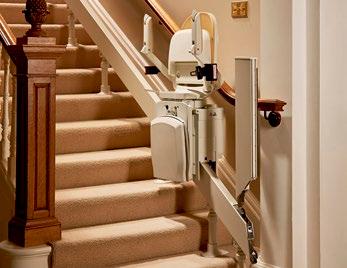

Alison Steadman, 71, has appeared on stage and screen for nearly five decades. As well as the BBc’s Pride and Prejudice and Gavin & Stacey, she’s celebrated for her starring turn in Abigail’s Party
…i was born in liverpool in Oxford Street Hospital, the same hospital that John Lennon was born in. I arrived in 1946; it was after the war, a time for celebration, so they decided to have another baby in the family. I have two sisters, Sylvia and Pamela, who are ten and 12 years older than me. I was very spoilt—not with money, as my parents didn’t have any—but with affection.
…s ylvia being unimpressed with me. She was so excited when my mum came out of hospital; she and her friend ran all the way home from school. She’d been imagining a
little doll in a cot, but—as she likes to remind me—she saw me and said, “Ugh!” Apparently I looked like a baby monkey with black hair. My sisters are both in their eighties now and, although we live in different worlds, we’ve stayed close.
…sitting on Father Christmas’s lap when I was five years old. I remember thinking, This beard’s not real, so I got hold of it and started looking underneath to see if it was attached. My mum was saying, “Stop doing that to Father Christmas! Stop doing that!” Father Christmas was laughing.
…my mum was a great CharaCter. She was the backbone of the family. I could ring her up and say, “Mum, I’m really scared of this job. I’m really nervous, what am I going to do?”
She’d go, “Come on, come on— you’re going to be OK.” She died 22 years ago and I still miss her terribly.
…my dad was lovely. He was a gentle man—he never raised a hand and very rarely told me off. He was also the go-to person if you wanted an ice cream. He was very artistic and when he retired, he started to paint. He loved music as well and he could

play the violin. In a different period in history, he probably could have done a lot more.
My parents were together from when they were 19 and when my dad died, at 79, my mum was brokenhearted. She never really recovered, and got cancer a couple of years later. She believed it was because she was grieving for my dad.
…my First day at s Chool. There was a boy called Anthony, who was so upset when his mum left that he sobbed and sobbed. I remember thinking, Why’s he doing that? What’s the matter with him? I was fine; I was

Alison with Father Christmas in 1951, before she tried to look underneath his beard; (right) an early actor’s portrait
quite an independent child. The teacher gave us all a little blackboard and chalk, and she sat Anthony next to me and said, “Now, you look after Anthony and help him to draw some pictures.” I tried to help while the tears were streaming down his face. He got over it eventually.
…my sisters moving out when i was growing up. They both married when they were in their twenties and moved out. Suddenly the house was quiet; before, it had always been full of their boyfriends, and on Sundays we’d all bake cakes. There would always be something going on and all of a sudden they were gone. I can remember being really sad, and rather lonely.
…the Queen’s C oronation. At school we had a big poster on the wall of the Queen in her golden coach. It was amazing. At the end of term, the teacher said, “The girl that can sit without giggling or moving until the bell goes, can have that poster.” I thought, That’s mine. All the others started giggling, but I sat and sat and sat and at the end she said, “Alison Steadman, here’s your poster.” I remember being so proud, coming out with it under my arm. I had it up on the wall in my bedroom.
…going to C ommer C ial C ollege. I loved school, especially art and drama, but I didn’t do well in my exams. My dad was a bit upset by that. I kept saying I want to be an actress. He said, “You can’t do that at 16. Acting is a very precarious job and you’ll be in and out of work. You better learn some shorthand and typing, so you’ve got something you can fall back on.” So I went to commercial college, and then I worked in a probation office typing up court reports.
…my audition F or e ast 15 drama s C hool. My audition pieces were hopeless; I read a poem and I did a Greek tragedy thing. The principle was great—she realised I didn’t know what I was doing, so she made me improvise. She asked me to pretend to be Muhammad Ali, or Cassius Clay as he was then, after he’d
won the world championship. I just jumped up and shouted, “I am the greatest! I am the best! Nobody can beat me!” And she gave me a place.
…my very F irst job. It was playing Sandy in The Prime of Miss Jean Brodie at the New Theatre Royal Lincoln. I was really nervous, obviously, but I had a sort of balance of confidence and being terrified. After the first performance, when I walked into the bar, a group of people turned to look at me and I said, “And this is the real me.” I just thought it was such fun.
…being nervous in Front oF the C amera. My first television job was a small part in Mike Leigh’s film Hard Labour, with Bernard Hill. When you first start filming, it’s quite scary to have the camera looking at you. I told myself that instead of being frightened of it, I had to see it as my friend. Once I did that, I got over it. It’s exhausting work, with long hours repeating scenes from lots of different angles. Sometimes after a long shoot, I have dreams where I’m just repeating actions over and over. I think it’s my brain getting rid of the repetition.
…Abig A il’s PA rty. You just do a job—and then people are talking about it and you suddenly realise that you’ve made an impression. Abigail’s Party [a play, which was broadcast on television in 1977] was great because it established me as an actor. I could take some time off and come back to it, because people knew me.
It’s a very difficult profession, more so now than ever. There are so many of us that there aren’t enough jobs to go round. You’re fighting all the time and if you’re not established, it’s tough.
…going into labour. I was in the house on my own, because my husband [Alison was previously married to director Mike Leigh] was travelling back from filming. I phoned my mum and she said to me, “Now don’t you worry, you’re going to be fine. You’ve done everything well in your life so far, and you’ll do this well.”

I met an actress some years ago, and we were talking about our parents. I told her this story, and she said to me, “Did your mum really say that? My mum has never said a positive thing to me my entire life. Never.” That’s the opposite end of the scale.
As Beverly in Abigail’s Party; (right) she played Pamela in Gavin and Stacey, opposite Larry Lamb

…loving being a mother. I always say to both my boys that out of everything in my life, I consider having the two of them the best thing that’s ever happened. Jobs are transitory and different and you enjoy them, but to have a child and to see that little person growing up and starting to speak, it’s like a miracle. I worked on and off when they were growing up but I always made sure I had plenty of time with them. I never wanted to be the kind of mother who was always walking out the door; I wanted to be part of their lives. I loved doing the parties, making them cakes and taking them out...it was just great fun.
…winning an o livier award for The Rise and Fall of Little Voice [in 1993]. I was up against a lot of well-known actresses so I was thrilled to be nominated, but I was certain I wouldn’t get it. I remember sitting in the stalls and when they announced it I just said, “What?” I couldn’t believe it. I could hardly get to the stage I was so nervous—I was shaking. The award sits on the shelf in my hall. I’m very proud of it.
…being asked to do Pride
A nd Prejudice . We had a sixmonth shoot, and the detail and the care that was taken over everything was extraordinary. They brought somebody in to teach us how to sit, and how to keep a certain distance from each other—in Austen’s time, there was a set distance from which you talked to somebody, and you wouldn’t overstep the mark.
We had sessions of learning to dance and we all joined in, whether we were dancing on camera or not. And the food that we ate! They even had period caterers. I knew the series was going to be good.
…buying an expensive moisturiser. I never spend much on make-up or beauty products because I don’t believe in it—I’ll just buy a £5.95 lipstick. But one day I thought I’d treat myself to a top-ofthe-range moisturiser that cost a fortune. I took it home, used it and a
few days later all these spots started coming up. A friend of mine had the same problem, and it turned out we were both using the same bloody chichi moisturiser. I went home, threw it in the bin and went back to my Nivea. I don’t think I’ve had a spot since.
…the end o F gAvin & stAcey. There are very few jobs you do that, when it comes to the end, everybody cries. We did three series and a Christmas special, but we knew instinctively that there wouldn’t be any more. It was such a lovely job and it was so special to us. Even now, people often come up to me and say that their mum or auntie is so like Pamela! It’s very nice that people identify with the characters.
…realising that, as a so C iety, we’re too F ond o F killing things. The other thing I love in life is wildlife. I’m a member of the RSPB, and my favourite thing to do when I’ve got free time is to go to a nature reserve. I get fed up when I go to garden centres and see what I call “the killing zone”. You’re in this wonderful garden centre—it’s all beautiful with lovely plants and perhaps a little café—but when you go to the back of the shop, there’s a whole wall of sprays and chemicals designed to kill. Slugs and snails are so important. Worms are important. Even flies have a place. Personally
I wouldn’t kill anything; I think there’s always another way.

…meeting my grandson. My first grandson was born this year, and I met him when he was just three hours old. I took my jewellery off so I wouldn’t hurt him and then I slipped my hand gently under his head, and his little face screwed up. Your heart just melts. Every generation has their own way of doing things. My son is very hands-on and even has a feeding app on his phone! I couldn’t believe it.
As told to Fiona Hicks
Spider! by alison steadman
OBe (Hodder Children’s Books, £12.99) is out now.



If you’re approaching retirement, new pension rules mean you will have a much wider range of options available. Guy Myles, founder of Flying Colours, gives his five top tips to help you to decide what to do in the run-up to retirement




This takes account of all current assets and liabilities, the projected savings and investments that will be made between now and retirement, how the money is invested, and the manner in which it’s likely to be withdrawn in retirement. Noting the specifics of your existing investments will reveal the most probable future path for your investments and the income you can expect in retirement. It’s well known that people who plan are more likely to achieve their goals and gain great satisfaction from being aware of their situation. Getting a plan should always be the first step.
The UK government has made it an attractive option to invest long-term through pensions. However, the rules are constantly changing as a result of the cost of pensions to the Treasury being so large. This means that it’s very easy to end up paying more in tax then you should taking cash out at the wrong time or in the wrong order from your different investment pots could have an adverse effect. Similarly, how you invest can also make a difference. Always be aware of the impact tax can have on your retirement.
Many old-fashioned investment products have penalties or tax consequences if you sell them. Often, these can be mitigated through careful planning but it’s common
for people to make mistakes. The product provider isn’t under any obligation to warn you of the risks so be careful before you decide to change any existing investments.
Luckily, amid all the risk surrounding your investment plan, there are plenty of ways you can take advantage of the rules to give your retirement plan a lift. A great example is the ability for retired people to continue to make small contributions and receive tax relief even if they are already taking their pension. It’s a great uplift and a benefit that very few people take advantage of. The complexity of our tax and product system throws people off.
Unless you’re already very sure about what you want to do with your pension, taking advice could be the soundest financial decision you’ll ever make. A recent survey by the International Longevity Centre UK (ILC-UK), highlighted that people who take financial advice are on average £40,000 better off. n
Reader’s Digest has partnered with pension and investment experts Flying Colours, to provide you with the advice you need to identify which option is best for you. Call our pension experts on 0333 241 9919 or visit readersdigest.co.uk/ pensions to help you decide which path suits you best, so you are then able to access the appropriate advice.


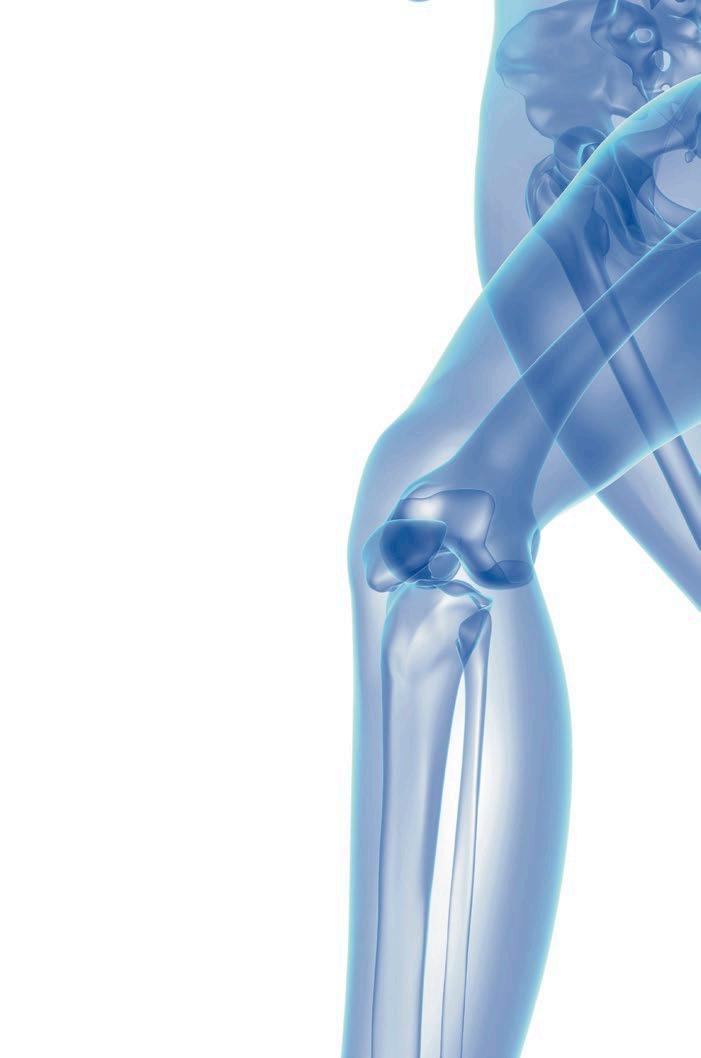
Osteoporosis needn’t be a dire diagnosis—here’s how to keep yourself strong, plus some good treatment options
Her bones were tHe last tHings on Hilkka
Hopearuoho’s mind when, in 2010, the Helsinki, Finland, native was diagnosed with breast cancer.
But because breast cancer is one of numerous conditions that can weaken the skeleton, her doctors ordered a bone density test. The test found that Hilkka, then 55, had osteoporosis in her spine, making her at increased risk for a fracture. Doctors also explained that the chemotherapy Hilkka was about to undergo would likely weaken her bones further. For now, as she underwent chemo, she was prescribed calcium and a synthetic form of vitamin D.
It wasn’t until 2016, with her cancer well behind her, that a second bone density test showed that the calcium and vitamin D hadn’t arrested her osteoporosis. Her doctor then prescribed Prolia, a biological osteoporosis drug designed to limit the breakdown of bone.
But as a researcher by profession, then 62-year-old Hilkka decided to find out more.
She wanted to know what she could do to protect her bones from further degradation.
too great as the new bone cells are not replenished, making our bones more fragile—and easy to break.
It’s complicated and not an exact science figuring out who’s at danger of having fractures and who isn’t. WHO estimates that there are currently 22 million women and
Michèle’s rheuMatoid arthritis treatMent had weakened
her bones
THE TErm osTEoporosis means, literally, “porous bone”. The inside of our bones resembles a honeycomb, a web of cells that break down and get replenished with new ones, just like the cells in other parts of our bodies.
But sometimes the spaces in that honeycomb-like structure become
5.5 million men aged 50 to 84 in the EU with osteoporosis. Among those, osteoporosis will be responsible for approximately 3.5 million fractures by the end of this year, primarily to the hip, back and forearm. It’s these fractures that are the danger to an ageing population and what the medical community is determined to reduce.
THE sun HAdn’T yet risen that chilly morning of January 19, 2016, when Michèle Olivier of Le Havre, France,
a 59-year old teacher, walked briskly to work, just as she did every day. This time, though, she tripped on the uneven pavement and fell. The pain in her right hip was excruciating.
Taken to the local hospital’s emergency room, x-rays of her hip showed she had a severe fracture— the kind that occurs when bone structure is impaired. Michèle was stunned to hear this news. She’d had a bone density test about two years before and was told her bones were in fine shape. How could this happen?
A closer look at her medical history, however, revealed that Michèle had other pre-existing risks for a serious break. She’d had two broken leg bones in 2014, a sign that her skeleton might be less robust, and the reason her doctor ordered a bone density test. Then in 2015, she was diagnosed with rheumatoid arthritis. That illness, and the corticosteroids she was prescribed to treat it, are known to weaken bones.
Her hip was replaced the day after the accident. Thanks to new, minimally invasive surgical techniques—and a healthy, active lifestyle prior to her accident— Michèle was able to walk again almost immediately. And she was prescribed Actonel, a drug that’s been shown to strengthen the skeleton. Michèle also follows an ambitious exercise regimen of swimming and stationary bike spinning.
But not all those with hip fractures

are so lucky. “There’s a high mortality in the first 30 days particularly, but also in the first year after hip fracture,” says Dr Eugene McCloskey, professor in adult bone diseases at The University of Sheffield. The reasons aren’t well documented but he speculates that it’s due to many things: blood loss; the risk of inflammation and infection; the risk of anaesthetic—and just the shock of the injury.
That’s why the focus is on preventing breaks in the first place.
There are definitely steps you can take to reduce your chance of developing
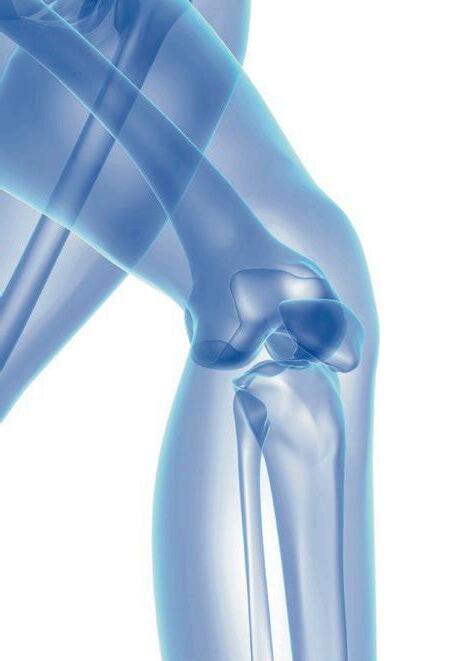
osteoporosis as well as control it if you have it. You can’t change the genes you inherited; nor can you undo a history of illness such as rheumatoid arthritis, diabetes, or breast cancer— or the side effects of drugs prescribed for you. But if you smoke, stop. And you can limit the amount of alcohol you drink, eat a healthy diet, and exercise regularly.
Increasing physical activity is one of the most important lifestyle modifications that an individual can make. Exercise slows bone loss and reduces the risk of a fall. Strength training with elastic exercise bands,
weight machines, or free weights can improve bone and muscle. “Weight bearing” exercise— anything that forces your body to “work against gravity” says the US National Institutes of Health, can help build bone and prevent bone loss.
But if you already have osteoporosis or other signs of a compromised skeleton, your approach to exercise needs to begin with a consultation with a physical therapist or medical expert to ensure you don’t take on a programme that might actually cause a fracture. There are still plenty of options.
“Every time you take a step, you send a signal to your brain that something is happening and that stimulates bone turnover in a good way,” says Professor Kristina Akesson of Lund University and Skanes University Hospital in Malmo, Sweden.
Nutrition, too, plays an important role in prevention. Earlier this year a study in the Journal of Bone and Mineral Research showed that an anti-inflammatory diet (high in fruits, vegetables, whole grains and fish) was shown to preserve bone density and reduce the risk of hip fracture.
It’s also important to get enough calcium and vitamin D (which helps the body utilise calcium). A study published in the American Journal of Clinical Nutrition found that people without inherited risks for fractures benefit the most from calcium and vitamin D supplementation.
However, even if you’re diagnosed with osteoporosis through a bone density test, it doesn’t necessarily mean you’re as fragile as an eggshell. “Not everybody with a bone mineral density that puts them on the osteoporosis threshold will have a fracture,” explains Dr McCloskey.
And, when all is said and done, “What we’re really concerned about is the bad outcome of osteoporosis,” stresses Akesson. “The fracture.”
Often doctors will recommend preventive treatment if your FRAX assessment (a formula that takes into account different break factors) indicates a 20 per cent risk of any serious fracture in the next ten years, or a three per cent risk of hip fracture in that time frame. And, because breaking a bone is often a sign of a compromised skeleton, treatment might be recommended if you’ve suffered one fracture already, even if a bone density test or FRAX assessment suggests a lower risk.
The most frequently prescribed medications are bisphosphonates. “Bisphosphonates, in general, reduce your risk of fracture by 30 to 50 per cent, depending on fracture type,” says Akesson.
But there’s some controversy surrounding these medications. Although the risks are minute (between one and four in 10,000), bisphosphonates have been reported to cause jawbones to deteriorate and
wHo’s mosT AT risk?
gEndEr: Women are about four times more prone to the condition than men: 80 per cent of cases occur in women. A natural bone protector, oestrogen levels decrease in postmenopausal women.
AgE: In addition to becoming more porous, the quality of our bones deteriorates over time.
Body TypE: Because your bones respond to the load that’s placed upon them, the more weight your skeleton carries overall, the stronger it gets. Abdominal obesity, on the other hand, can actually increase the risk of hip fractures.
HErEdiTy: If one or both of your parents suffered fractures due to a compromised skeleton, you’re likely to be at greater risk.
LifestyLe: Smoking, a poor diet and a sedentary lifestyle all increase the risk.
mEdicATions: Corticosteroids are the drugs most often implicated in weakened bones, but other medicines may also have deleterious effects, including antidepressants, antiepilepsy, chemotherapy and antidiabetes drugs.
oTHEr mEdicAL condiTions: Rheumatoid arthritis, diabetes, and breast cancer are a few of the conditions that are known to increase osteoporosis risk.
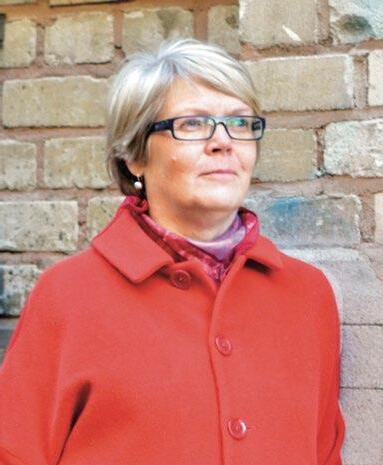
thigh bones to break. According to Akesson, these side effects are only likely to occur in people who have cancer or who have dental problems that involve the jaw.
More common is the side effect
Michèle experienced with Actonel. After four months, she began having stomach pains so severe she had to discontinue the medication. The doctors then switched her to the biological drug, Prolia, which is working well for her.
Prolia, a biological agent, is given as an injection twice a year. “With Prolia, it looks like bone density progressively increases the longer you use it,” says Dr Eric Orwoll, professor of Medicine at Oregon Health and Science University in the US.
Teriparatide, another medication used for osteoporosis, actually builds bone, says Akesson. But it can only be used for 18 to 24 months due in part to concerns that its ability to grow bone might increase the risk for bone cancer (although there’s no human evidence of this). “It’s a very good way of getting a rapid increase in your bone density,” says Akesson.
Oestrogen-replacement therapy has also been shown to reduce the risk of fractures, in general by up to 29 per cent and of the hip by as much as 35 per cent, according to two large studies published in 2003 and 2006.
However, oestrogen has been implicated in increasing the risk of certain cancers, including breast. But now, thanks to a study published in March in The Journal of Clinical Endocrinology and Metabolism, we know which women are most likely to benefit from it, and for which women it isn’t worth the risk.
Researchers at the University at Buffalo in New York found that women with an inherited predisposition for fracture get a big boost in bone strength from oestrogen therapy. By contrast, women with no genetic risk got little benefit. Armed with this data, doctors are better able to “get the right drugs to the right person to ensure the most benefit and least harm,” says the study’s lead author, associate professor Heather Ochs-Balcom.
Another drug, raloxifene, offers
some of the benefits of oestrogen without the breast cancer risk. In fact, says Dr Orwoll, “It probably protects against oestrogen-receptor-positive breast cancer.” But although it appears to offer protection against some breaks, there’s currently no evidence that it prevents hip fractures.
Lastly, physicians are likely to soon have a new drug called abaloparatide in their arsenal. According to a 2016 paper in the Journal of the American Medical Association, abaloparatide, which acts in the same way as teriparitide, reduced fractures and increased bone density in women with osteoporosis more effectively than the older drug.
so osTEoporosis nEEdn’T be a dire diagnosis. There are many treatment options, even if you already have a compromised skeleton, and research is ongoing.
But just as important: you can take steps right now on your own to keep yourself strong, protect yourself from loss of bone mass and the risk of fracture, and stay active throughout your life.
hilkka found out what she could do to prevent further bone loss
When Hilkka decided to find out what she could do to prevent further degradation to her bones, her research led her to The Finnish Bone Society, where she took classes in topics such as bone-friendly nutrition and how to prevent falling.
Abaloparatide has been approved by the US Food and Drug Administration and as of this writing, is undergoing regulatory review by the European Medicines Agency.
She also joined an exercise group to learn what sorts of activities were safe and effective for building stronger bones. “I want to travel and to hike and live a good life as long as possible,” says Hilkka.
cup o F J o E?
Three surprising facts about coffee:
1) It’s the world’s second most valuable traded commodity, just behind petrol.
2) The global population consumes 2.25 billion cups of coffee daily.
3) Drinking 70 cups of coffee in quick succession could kill a person. sourc
Scientists have made a major step forward in harnessing the unique power of curcumin, a versatile component of turmeric, that has demonstrated a potential benefit for a range of health conditions
The discovery of a method to standardize the dose and boost the body’s absorption of the compound has brought new hope that curcumin’s therapeutic properties will at last be able to be delivered in a reliable way with every tablet.
The product, available to British consumers, called Turmeric+ has excited the interest of university researchers trying to find a reliable and reproducible dose to demonstrate the properties of curcumin, the active ingredient in turmeric.
Curcumin is a minor compound in the plant-root based Indian spice turmeric. Thousands of published studies have already shown its exciting capacity to impact human health.
Although curcumin can have positive effects in the body, until now it has been difficult to get the human body to absorb the large volumes required

Studies have shown that most people cannot absorb enough curcumin in its natural form to gain a benefit, which means simple curcumin tablets may not work.
Turmeric+ follows more than a decade of research by international scientists working in university laboratories
They were looking for a way of boosting curcumin absorption and succeeded in combining it with plant-based phospholipids from soy beans Phospholipids are a class of fats that are a major component of all cell membranes and published studies have shown that combining them with curcumin will produce a 29fold increase in curcumin uptake by the body
Turmeric+ is marketed by Cambridge-based brand FutureYou The product is manufactured to pharmaceutical grade and the company is now embarking on further studies to demonstrate its benefits Talks are underway with a number of British universities
“We are very excited by the level of interest from scientists in our product,” said Alf Lindberg, a former secretary to the committee of the Nobel prize for medicine, who is a Chief Scientific Officer to Cambridge Nutraceuticals “We think we at last have a way to deliver a reliable regular dose of this compound. We’re hoping the trials will give definitive proof of the benefits of Turmeric+ ”



Susannah is twice winner of the Guild of Health Writers Best Consumer Magazine Health Feature

‘Tis T he season for wais T lines increasin’ but, don’t fret, it’s possible to stick to your diet and avoid cramming in more calories over the festive season.
Avoid food pusHErs. There’s usually one of these at every seasonal gathering, getting offended if you don’t have another helping of turkey and stuffing or a home-made mince pie. Tell them you’re under doctors’ orders.
go for your fAvouriTEs. Christmas treats are usually laden with butter, sugar and starch, which don’t fit into your long-term weight-loss plan. Target your top faves in advance, or skip chocolate for wine, or starters for gravy.
EAT mindfuLLy. Do you wolf down your Brussels sprouts with one eye on the Christmas trifle? The slower you eat, the longer you’re in contact with your food. This makes your brain more likely to realise that you don’t need anything else.
invEsT Two Hours A dAy in BEing HEALTHy. When you’re shopping for festive fare, make sure you prioritise fresh food, especially


fruit and vegetables. Spend time preparing and cooking it, and fit in exercise too—it’s all too easy to put that run or gym workout on the back burner at this time of year.
drink wATEr, noT jusT winE. Not only will you be consuming fewer calories, but you may be burning them too. German research has suggested that drinking 2.5 litres of water a day helps rev your metabolism. So consider being the designated driver at the party, or alternating a glass of wine and a glass of water. Make sure you’re drinking plenty of H2O throughout the day too.
TEAm up wiTH wEigHT-Loss BuddiEs. Having a small accountability group of two to four like-minded mates can help you keep on track both during the festive period and beyond.
proBLEm: You’re flustered by the flurry of festive chores.
rEmEdy: Indulge in some mindful thinking. take a quiet moment to steady yourself in the midst of the chaos when you’re out shopping, and consider the reason for the season— a wonderful opportunity to share time with friends and family.
proBLEm: Your digestive system is confused.
rEmEdy: If you’re feeling constipated, bloated or both from all those rich desserts and salty snacks, kick off your day with a fibre-filled breakfast, such as bran sprinkled on yoghurt. But you also need plenty of water to keep you regular.
proBLEm: Your sleep is suffering. rEmEdy: try to keep to your usual bedtime routine in the face of parties and seasonal stress. Wake up at your usual time and don’t sleep in just because you’re tired from the night before. And avoid crashing on the couch if you’re exhausted—that can scupper your sleep later on.
proBLEm: You’re already on your second cold.
rEmEdy: Get a flu shot if you’re eligible and wash your hands regularly to keep germs away. Make sure you get plenty of vitamin c citrus fruits such as clementines are ideal. And go easy on the christmas tipple, as alcohol weakens your immune system.
1. kEEp your HAnds in your pockETs. Germs get on hands, hands touch face, germs enter body. It’s that simple. Where there are crowds—at a concert, football match or any other public place—there are germs, millions of them on every surface. If you can avoid touching them, you can avoid being ill.

2. cArry HAnd sAniTisEr And TissuEs. Use it after loo visits and before eating. Tissues in your bag or pocket also serve as an emergency stand-in for loo paper.
3. drEss in LAyErs. The crowd is pressing in around you, you feel too warm and suddenly the ground comes up to meet you. But if you’re dressed in layers, you can shed one if it gets too hot. You can also build them up if you start to feel cold.
4. cLock THE EmErgEncy ExiTs. It only takes seconds to check where the exits are when you enter a big venue, but it could be a life-saver. Research has shown that more than half of deaths at concerts have happened when people were trying to get out of the venue.
5. movE sidEwAys from THE crowd if THErE’s A sTAmpEdE. Move sideways towards a wall, then press yourself against it until the crowd disperses or you find a better exit. This gives you a better chance of not being trampled.
Around 2 million people in the UK suffer from the winter blues—also known as seasonal affective disorder, or SAD—but one way to minimise them is a daily lunchtime walk. The activity, combined with the increased exposure to natural light, can boost your spirits. Visit readersdigest.co.uk/sad to learn more.
...And rELAx
stretches to ease the stress of the season:
After that christmas bakeathon…relax with an upper-back stretch. Get on all fours on the floor. Inhale, drop your stomach, look up at the ceiling. exhale, arch your back like an angry cat as you drop your head and neck. repeat ten times.
After partying in heels…ease lowerback tension with this simple twist. lying down on the floor, bend your knees and place your feet hipwidth apart. Drop your knees to the left as you gently turn your head to the right. hold for two minutes, then repeat on the other side.
After lugging heavy bags of presents... stretch your shoulders, arms and neck. Bend in half at the waist and rest your hands on the kitchen counter for support. let your head fall between your arms, release your neck and breathe for one minute.
Ever considered joining the hipsters and growing a beard? Decembeard is the perfect opportunity to have a go, while raising money and awareness for bowel cancer at the same time.
But don’t forget there are two screening programmes for bowel cancer, and we all know that the sooner this condition is caught the more likely you are to survive. This makes accepting those invitations a no brainer.
The first test is bowel scope screening at age 55 (or on request up to 60), in which a thin, flexible tube with a tiny camera on the end is used to look at the large bowel. It is currently being rolled out across England but the evidence is already showing that it can reduce bowel cancer risk by a third.
The other screening programme is the faecal occult blood test, which people are invited to take every two years from age 60–74. This involves sending off a sample of poo to check that there’s no blood in it—a possible symptom of bowel cancer. This test cuts the risk of dying from the disease by 16 per cent. Yet take-up is low, particularly among men.
To find out more about Decembeard and raising awareness of bowel cancer, head over to beatingbowelcancer.org/?get-involved/policycampaigns/decembeard

Fiona studies
Naturopathic Nutrition at the College of Naturopathic Medicine, and is a member of the Nutrition Society
NATURE’S OWN FAST FOOD, nuts and seeds, are filling, satisfying and—unlike many other convenience snacks— healthy. So why not pass on the Christmas canapés and opt for the nut bowl instead? Here are some of the best:
ALMONDS Several studies have found that consumption of almonds is associated with a reduced risk of heart disease. This may be because they’re a rich source of monounsaturated fat, which lowers cholesterol when eaten in place of saturated fat (found in full-fat dairy and meat). Almonds are delicious tossed in your favourite spices and lightly roasted.
Are you one of the 5.4 million people in the UK who suffer from asthma? A new study suggests that diet and exercise changes could help improve symptoms of the condition. The study, conducted by Bispebjerg University Hospital in Denmark, put participants on a healthy lifestyle plan, which included eating ample protein, low sugar, lots of fruit and vegetables, plus taking part in regular exercise sessions. After eight weeks, participants reported an impressive 50 per cent improvement in their asthma symptoms.

CASHEW NUTS One serving of cashew nuts contains almost 100 per cent of your recommended daily allowance of copper. This trace mineral contributes to a number of important functions in your body, including healing scratches and scrapes. Try blending cashew nuts to create a smooth nut butter—it tastes like white chocolate (really!).
WALNUTS They look a bit like brains and, funnily enough, they’re good for your brain too! Walnuts contain allimportant omega-3 fats, which are converted into a fatty acid in your body that assists with brain cell repair. Try pairing some chicken breast, avocado and walnuts with iceberg lettuce for a satiating lunch.
PUMPKIN SEEDS These inexpensive seeds are a good source of zinc, a mineral that’s essential for a healthy immune system—so eating them daily could help to ward off the season’s sniffles. Their nutty flavour and crunchy texture makes them great for sprinkling on everything from salads to homemade muffins.
SUNFLOWER SEEDS Just 35g (or a good handful) of sunflower seeds contains over 80 per cent of your daily recommended intake of vitamin E, which has a powerful antiinflammatory effect. Stir a couple of tablespoons of seeds into your morning scrambled eggs to liven up their taste and texture, or simply eat whole for a filling snack.

Max is a hospital doctor, author and newspaper columnist
TEACHING BY HUMILIATION used to be the mainstay of medical education. The assembled gaggle of medical students would stand by the bedside of some patient deemed “interesting”, while a grumpy consultant would pick on one poor, shaking student. They would stand there redfaced, staring at their shoes, as the consultant exposed their ignorance of a certain topic before setting about mercilessly humiliating them, while the rest of us practised making ourselves look as small and inconspicuous as possible. This would soon degenerate into a general character assassination and invariably resulted in someone crying. It was thought to be character-building.
Of course, since becoming a doctor I’ve realised that on the job, no one is interested in whether or not you know the distribution of some nerve, or the obscure presentations of an rare syndrome. All any of your seniors are interested in is that the results of the test they told you to book are in the notes. But this can be harder than it sounds, and can still result in plenty of going red and staring at your shoes.
BUT LAST WEEK I PUT ALL THIS BEHIND ME. Last week I was on holiday, and decided to catch a train to visit my sister. As the train pulled into the station, I became aware of a commotion further down the platform.
“Quick! Someone, help!” a woman shouted.
“Get the guard! Is he hurt?” I could hear people asking.

Then somebody said it: “He needs a doctor.”
Oh no, that’s me. There was a crowd of people standing motionless around one of the doors, which began to close. The train’s engines got louder as it prepared to pull out, but there was a collective scream so loud that the driver heard and halted the train.
“Get a doctor,” someone screamed.
“I’m on holiday,” I felt like screaming back—but gave in and ran over to the scene instead.
The crowd parted. I looked around. There was nothing there.
“He’s under the train.”
“Keep the mother away,” I heard someone add. “That woman’s son missed the step and has fallen down the gap, under the train.”
There was silence. Everyone had moved away from the edge of the platform and was looking at me expectantly. There was only one thing for it; I took a deep breath and peered between the platform and the train.
“I’ve dropped my bag of Maltesers,” comes the reply from the little boy staring up at me.
“Are you hurt?” I ask.
“I’ve dropped my bag of Maltesers,” he repeats.
I kneel down, pick him up and put him on the platform. Quite why it required someone with a medical degree to do that I’m not sure. Apart from having had a bit of a surprise, he was fine.
Everyone’s looking at me. I get on the train red-faced, and stare at my shoes for the rest of the journey.
Chronic Obstructive Pulmonary Disease (COPD) is a long-term problem affecting the lungs. There are two main aspects to the disease: persistent bronchitis (narrowed airways) and emphysema (damaged alveoli, or air sacs). The combination of these two processes means that it’s harder to get air into and out of the lungs. People with this condition therefore struggle to get enough oxygen into their bodies, and to get rid of the carbon dioxide when they breathe out. They will often get short of breath, have a pesistent cough and wheeze when it’s cold.
It’s usually the result of long-term lung damage. The most common culprit is smoking or second-hand smoke, although pollution can also be to blame. Sometimes people’s jobs can also cause it—for example if they inhale lots of dust or chemicals.
The damage to the lungs that causes COPD can’t be reversed. However,

there are treatments that can help with the symptoms. There are several inhalers that can help improve the airflow to the lungs and, if people have low levels of oxygen in their bodies, then this can sometimes be given at home. In very severe cases, people can have surgery on their lungs to remove the damaged parts.
Avoiding smoking is the biggest thing. Even in those who already have it, stopping smoking can help it stabilise and stop it getting worse. Regular exercise is also important as this can help improve lung function, as well as strengthen the heart.
Immunace® has been developed by Vitabiotics’ experts in micronutrients to help maintain all-round health and vitality. Including vitamins D, C, zinc and selenium which contribute to the normal function of your immune system.
Immunace® Extra Protection is an advanced formula that includes all the benefits of Immunace® Original plus more, with 1000 IU vitamin D.



The art forgers make millions conning art lovers with faked paintings. But one professor is on their case…
As art forger Wolfgang Beltracchi and his wife Helene drank champagne on a Caribbean island, they had no idea that a budding forensic art investigator was honing the skills that would put them in prison. Professor Nicholas Eastaugh wasn’t on their tails yet—but he soon would be.


The painter Wolfgang Beltracchi stands in front of his painting Gruppenbild der blauen Reiter; (inset) Professor Nicholas Eastaugh
Unaware that time was running out, the Beltracchis continued flitting between their European homes and lazing on their yacht; ill-gotten gains from what would prove to be the biggest art forgery case of the 21st century. Their luxury lifestyle was afforded by Wolfgang’s ability to reproduce classic paintings worth more than £30m.
The Beltracchis, whose gang included Helene’s sister, Jeanette Spurzem, and friend Otto SchulteKellinghaus, pulled off an elaborate scam that duped auction houses, museums and private collectors alike for more than 20 years.
It’s believed that Wolfgang, now a well preserved 65-year-old with shoulder-length grey hair, began his criminal career in the 1980s. It it wasn’t until he married Helene in 1993 that the operation became truly sophisticated, by which time Professor Nicholas Easthaugh was emerging as a leading art detective.
While the gang scoured provincial French auctions for appropriately aged canvasses Wolfgang could use, the Professor was busy using his
expertise to expose other less ambitious fraudsters.
Wolfgang took just a few days to copy an Old Master or Picasso, but found the biggest money to be made was in imitating 20th-century Modernists. One of his greatest successes was called The Forest, purportedly by Max Ernst, which was wrongly authenticated by a renowned art historian at the Beltracchis villa in the South of France. It sold for £1.5m and in 2006 was loaned to the Max Ernst Museum in Germany. Firmly believed to be genuine, a French publishing tycoon then purchased it for £5.5m.
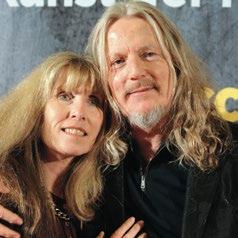

in his own way, Beltracchi was innovative and experimental
Rathe R than copy existing pictures, Wolfgang’s modus operandi was to create supposedly unseen or lost works by relatively unknown artists. He scraped the top layers off a suitably dated painting, retaining the “ground” used to coat the canvas, and got his brushes out. “You have to respect the hard work he put in,” says Professor Eastaugh. “Although he’s not a scientist, in his own way
Wolfgang and Helene Beltracchi at a screening of the film Beltracchi—The Art of Forgery; (left) his infamous Max Ernst forgery, The Forest, which sold to a publishing tycoon for a cool £5.5m

Beltracchi was innovative and experimental. He built a special oven and cooked his paintings until he got the cracking in the paint surface that comes with age just right.”
To further convince buyers, the Beltracchis concocted an elaborate backstory that Helene and SchulteKellinghaus had inherited the artworks from their grandparents, who they claimed were inter-waryear collectors. When questions started to be asked, the gang mocked up sepia photographs with Helene dressed in period clothes pretending to be her grandmother.
In the background hung Wolfgang’s reproductions, which she claimed proved the pictures’ provenance.
They said the grandparents did business with the renowned German Jewish collector, Alfred Flechtheim. It worked because like all successful cons, the art world wanted it to be true. It also helped that Flechtheim’s life had been cut short when he had fled the Nazis in 1933, only to catch his leg on a nail and die of blood poisoning upon reaching London.
What the gang didn’t know, however, was that as their operation became ever more sophisticated,

take such an extremely small sample using very fine eye surgery scalpels, that you shouldn’t be able to see where we’ve been.”
Beltracchi tried to stay ahead by keeping himself informed about scientific advances and submitting samples of the paints he was using for chemical analysis. “If a test report highlighted any materials that could have only been available after the work was supposed to have been produced, Beltracchi removed it from his palette,” says Professor Eastaugh.
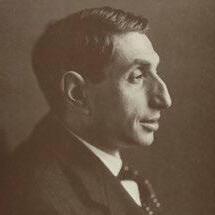
so too did Professor Eastaugh’s ability to catch them. His knowledge of historical art techniques was now second to none, bolstered by scientific advances, and he had set-up his own business, Art Analysis and Research. Eastaugh’s laboratories are as technologically equipped as the National Gallery and he has an impressive roster of worldwide clients who want their prospective art purchases verifying.
“We can test with ultraviolet fluorescence, chemical analysis and ultra-high resolution digital imaging,” he explains. “We’re able to
But the Professor didn’t rely solely on science. His speciality was pigmentation and he’s amassed 3,000 vials of brightly coloured powders from nearly every chapter of art history—whites and yellows from Pompeii, blues from ancient China and Japanese glass pigments—which he keeps in an office drawer. Each helps him understand how artists worked in nearly every historical period, and consequently how to spot a modern fake. Red pigment, for example, used to be so expensive that painters boiled cast-off garments to extract the dye and bits of fibre can still be found in their work today.
acco R ding to the British Art Market Federation’s latest figures, the UK has the world’s third largest
arts and antiques market, which in 2014 was worth £9bn. Professor Martin Kemp, an emeritus professor at Oxford University and leading expert on Leonardo da Vinci, said, “Art forgery is a huge issue. It’s a cat and mouse game that the forgers are finding more difficult to stay ahead of, but they’ll always find a way into the latest art market hotspot. The Russian art scene, for example, is a bit like the Wild West at the moment.”
The beginning of the end for the Beltracchis came when Wolfgang copied a painting by German expressionist Heinrich Campendonk,
A woman in the Moritzburg Art Museum in Germany looks at the Red Painting with Horses forgery, which was created in the style of artist Heinrich Campendonk by the Wolfgang Beltracchi
eastaugh has amassed paint from every chapter of art history
who died in 1957. His fake Red Painting with Horses sold for a record £1.7m in 2006, but issues were soon raised about its supporting documentation. In 2007 it was sent to a German art institute for analysis, which failed to reach a conclusion about its authenticity.

Eastaugh was itching to get his hands on the alleged Campendonk and in 2008 it arrived at his offices near Tower Bridge, London. Analytical tools at his disposal included x-rays, electron microscopes and ultraviolet lights, but it was his extensive knowledge of pigmentation that brought the Beltracchis down. Using an electron magniscope, he discovered that the master forger had made a rookie error by using two historically inappropriate colours, the most damning of which was a titanium dioxide white; a pigment which wasn’t widely available in 1914 when the painting was dated. “White titanium wasn’t introduced until after 1916,” says Eastaugh. “The difference was only two years but there was no getting away from it. I knew I had him.”

Beltracchi’s scheme began to unravel and the gang was arrested by armed German police in August 2010, and went to court the following year. The case was cut short after nine days of the expected two month-long trial when German prosecutors made a plea-bargain deal with the gang. Wolfgang admitted 14 forgeries worth nearly £30m and was jailed for six years. His wife Helene, 53, got four years, her 54-year-old sister a 21-month suspended sentence and ShulteKellinghaus, 67, five years. They were also ordered to pay millions of pounds in compensation.
The Professor, who has since analysed eight more Beltracchis and grown to recognise his style, remains on the lookout for more of the fraudster’s paintings, which are undoubtedly still hanging in art galleries and museums around the world. “We’re joined at the hip now,” Eastaugh says with a smile.
it was only two years But there was no getting away from it—i had him
Since hi S R elea S e from Cologne prison two years ago, Wolfgang Beltracchi has staged numerous solo exhibitions and is regarded as a fine artist in his own right. Now his own signature appears on his work.
the uk has produced some of the world’s most prodigious and eccentric art forgers. together they’ve conned the art world out of millions. here are a few of the more audacious…

JohN Myatt pulled the “biggest art fraud of the 20th century” off by faking more than 200 works by the famed Swiss abstract sculptor and painter Giacometti, along with other modernists, using ky Jelly and emulsion paint. the 72-year-old Staffordshire artist duped leading auction houses and critics for nearly a decade until his arrest in 1995. he was sentenced to a year in prison, where he was nicknamed picasso, for conspiracy to defraud. after his release, he became an artist in his own right. over 100 of his fakes are said to still be in circulation.
ShauN gREENhalgh, assisted by his octogenarian parents and brother, copied works by lS lowry, paul Gauguin and Barbara hepworth, among others, on the Bolton council estate where he was raised. the 56-year-old bore a grudge after being rejected by a number of galleries. despite having no formal
training, he fooled the art world, including the British museum, for 17 years and was sentenced to four years and eight months in prison. Greenhalgh was released in 2010 and now has his own art website.
toM KEatINg said he forged old masters, including renoir and rembrandt, in protest against an art establishment that grew rich at the expense of the artists themselves. the londoner discredited experts, while making a tidy profit, by adding a layer of glycerine to his copies. if they were ever cleaned the chemical dissolved the paint above, destroying the work. keating, who was 66 when he died, claimed to have more than 2,000 forgeries in circulation by 100 different artists. charges against him were dropped due to ill health, though his condition improved soon after.
ERIc hEbboRN is best known for years passing drawings by artists such as van dyck, rubens and Jan Breughel off. he studied their paintings in museums, including the uffizi in Florence, then fabricated preparatory drawings for them. very few of the major artists kept their sketches so there was little for collectors and curators to compare his copies with. he was murdered in rome in 1996, aged 61.
Since winning The Great British Bake Off in 2015, Nadiya Hussain, 32, has authored four cookbooks and a novel. She’s also a columnist and TV presenter, and last year baked a birthday cake for the Queen


Food studies would be as valued as maths, English and the sciences. It’s so important for children to learn about healthy eating, shopping on a budget, food preparation and the benefits of cooking proper food at home. I came from a family where we had a cooked meal every night, and it wasn’t until I was about 17 that I realised this really wasn’t the case for other families. Learning to shop and cook efficiently and wisely is a challenge, but also a vital skill with lifelong benefit.
I’d keep local independent food shops alive and well. The fact that you can buy your chicken and paperclips off Amazon at the same time is a step too far in my book.
We’d all get around on Rollerblades. This has been a passion of mine since I was 11, when I was handed down an old pair from one of my sisters. Despite the initial scrapes and knocks—which you quickly

learn aren’t as bad as you imagine— the joy that you’re using your feet to propel you forward so brilliantly is such a thrill that you find you don’t even mind where you’re going. Rollerblading is an environmentally friendly mode of transport. It keeps you fit and, because it’s so much fun, you get in touch with your inner child while clearing your adult mind.
There’d be a cap on savings. Making memories is much more important than leaving behind money for your children. If savings above a certain amount aren’t being used, then they should go back in to the economy to help fund public services. I’m all for the here and now.
I’d make weekends three days long. Our lives have got crazier than ever before, as we cram our weekdays with things to achieve. It makes sense that our weekends become three days long—at the moment they definitely feel much too short.
Exams in primary schools would be abolished. I think they’re the worst thing about our education system. My three kids have tests every week, and I see them getting fixated on achieving top marks at the expense of any enjoyment in the learning process. I have to pull them back and tell them it doesn’t matter if they don’t get ten out of ten each time. There are enough exams for them
later in their schooling, not to mention the competitiveness of the work environment after that.
Voluntary work for teenagers would be compulsory. We live in a society where we have everything, but value nothing—so the opportunity for young people to see how good it feels to give something back, with no expectation of reward, is really important. Teenagers do lots of work experience these days, which is great, but getting them working for a charity, into a soup kitchen or visiting the elderly are experiences that will show them a different side of life, and help make them more compassionate young people.
I’d bring back our milkmen. There’s something so lovely about waking up and finding milk on your doorstep. I used to love that as a kid and I’ve just discovered a milkman in a proper old-fashioned float where I live. He’ll be making regular visits to our house from now on.
We’d think about others at Christmas. For every three presents you buy, you’d have to buy one extra for a child who might not otherwise receive one.
As told to Caroline Hutton
Nadiya’s Bake Me a Festive Story with illustrations by Clair Rossiter (Hodder Children’s Books, £14.99) is out now.

Few activities feel more festive than a good old-fashioned singalong. Here are our favourite carol services…
BY ANNA WALKER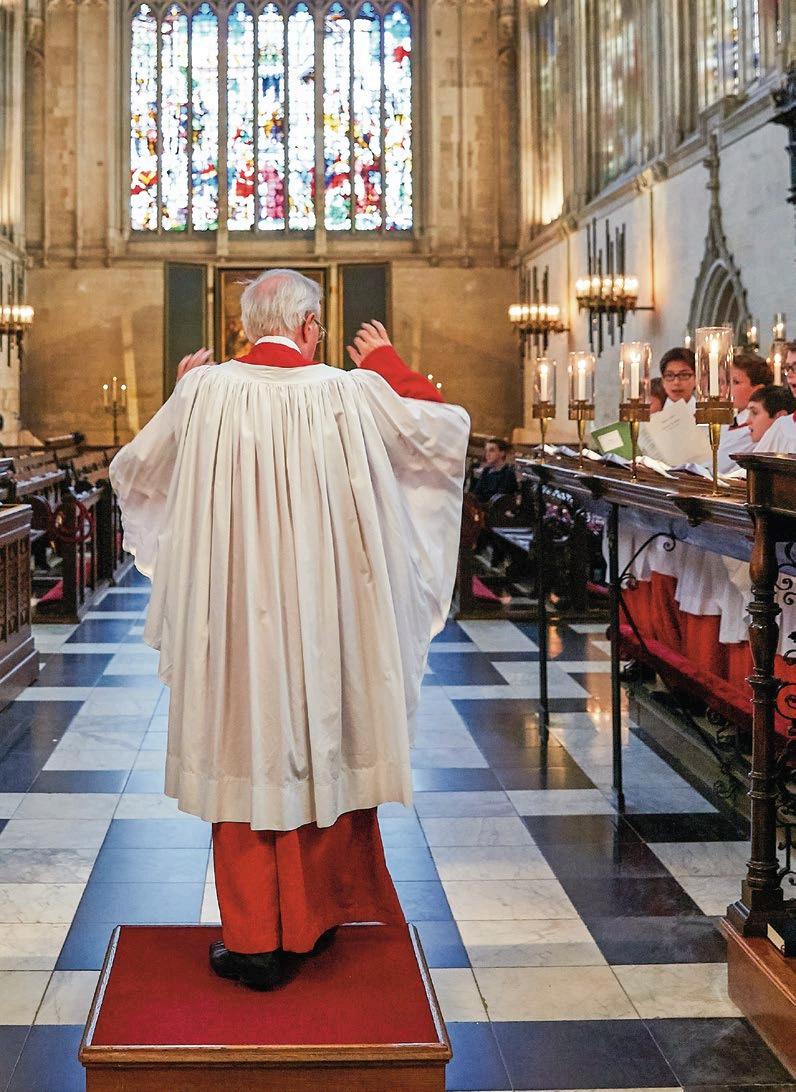 © KEVIN LEIGHTON/KING’S COLLEGE CAMBRIDGE
The Choir of King’s College, Cambridge
© KEVIN LEIGHTON/KING’S COLLEGE CAMBRIDGE
The Choir of King’s College, Cambridge
Broadcast on BBC Radio 4 every Christmas Eve, this concert at King’s College Cambridge is the real deal. A tradition proudly upheld since 1918—and broadcast since 1928— it’s the service that instantly springs to mind when you picture quintessential English carolling.
The service even continued during the Second World War, with carollers singing their hearts out despite a lack of heating and the removal of all ancient glass from the chapel.
Dubbed “A Festival of Nine Lessons and Carols”, the evening always begins with “Once in Royal David’s City” and features a brand new carol alongside readings from the Bible.
An immensely popular service, queuing for the 3pm concert usually begins in the early hours of the morning, but Cambridge singers are on hand to entertain the crowds.
■ Visit kings.cam.ac/events for more information


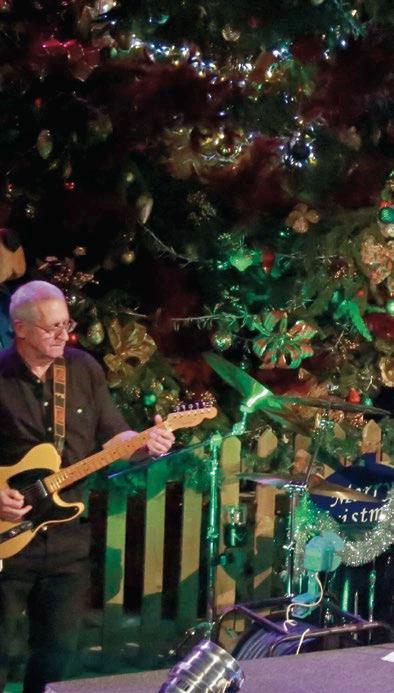
Make this year a Blue Christmas and celebrate with rock ‘n’ roll royalty at this unique carol concert at the Norwich Forum.
Now in its ninth year, “Carols with the King” celebrates Elvis Presley’s immeasurable contribution to the

Christmas carol canon with a good old-fashioned singalong.
Expect a mix of Elvis classics, Christmas songs and a few festive surprises along the way. Proceeds from the event go towards local charities, with a raffle and prizes for those feeling especially merry.
Says marketing manager Carole
Slaughter, “Our great line-up includes a new look for the band with Elvis and the Blue Sueders featuring The Broads; the fabulous singer Dale Bullimore; and hosting by Norfolk’s favourite, Olly Day. It’s a fantastic evening that we hope all will enjoy.”
■ Visit visitnorwich.co.uk for more information
All aboard the festive express as steam-train loving carollers gather at the Keighly and Worth Valley Railway to commemorate the Christmas season with a very special journey.
Passengers congregate at Oxenhope Station for carols before boarding the steam train—along with the Hall Royd Brass Band—ready to stop at all the major stations to sing, listen to parts of the Christmas story and join together in prayers.
Real ale is served aboard the train and a complimentary pie supper is on offer when passengers alight at Keighley, where local Yorkshire choirs are on hand to serenade them.
The event is so popular it was even featured on a festive episode of Songs of Praise.
■ Visit kwvr.co.uk/events for more information



If you like your carol concerts to be traditional, look no further than the magical annual “Hark! The Herald” concert held at the awe-inspiring Ely Cathedral.
Celebrated just days before Christmas, this annual concert focuses on traditional carols and seasonal music, including the likes of “The Holly and the Ivy” and “Away in a Manger”, all under the watchful

boughs of a magnificent 30ft-tall Christmas tree.
Sip on mulled wine as you enjoy the soaring voices of the cathedral choir, lit by candles in a building that dates back to 1083, and keep an eye out for a magical blanket of “snow” falling from the 142ft Gothic Octagon.
Says marketing officer Maddie Cox, “This concert showcases Christmas at Ely. Last year, the sight and sound of the choristers singing the ‘Snow Waltz’, as fake snowballs were catapulted through the air between the performers and the audience, was without doubt one of the highlights of the concert.”
■ Visit elycathedral.org for more information
Performed throughout the Christmas season in Sweden, Sancta Lucia (the feast of martyr Saint Lucy) is a traditional celebration of the power of light and hope against the darkness of winter.
This customary service at Liverpool Cathedral includes a candlelit procession to the voices of the London Nordic Choir and Evangeliska Fosterlandsstiftelsen, the charity that founded Liverpool’s Swedish Seamen’s church back in 1883.
Says Liverpool Cathedral’s Reverend Canon Myles Davies, “We’re delighted to welcome so many as we celebrate Christmas in this glorious space. Words and music, light and movement all play their part in telling the familiar Christmas story—we look forward to a wonderful time.”
■ Visit liverpoolcathedral.co.uk for more information


LONDON, DECEMBER 16
of one of London’s oldest church organs.
Don your most outlandish festive jumper, grab a beer, take your place in the pews and prepare to dance the night away.

Far from chiming peacefully with the sounds of silver bells, the aisles of St Giles Church in Camberwell echo with somewhat less traditional tunes.
Here, carollers belt out heartfelt renditions of Wham’s “Last Christmas” or The Pogues’ “Fairytale of New York”, all to the jaunty tones
Says co-creator Jordana Leighton, “From the first chords on the organ, people are on their feet, and by the end of the song they’re dancing in the aisles. There’s something rather magical in seeing 500 people packed into church pews singing their hearts out. It’s joyous, camp, kitsch and a lot of fun.”
■ Visit organoke.com for more information
People

GLOUCESTERSHIRE, DECEMBER 16–17
Singing “Away in a Manger” has never felt so apt. Gather in Winterbourne Barn for a carol service set as close to the nativity story as possible.
With dramatic performances of the original Christmas story by members of St Michael’s Church, plus wellknown carols for all to join, this service is set to be something special.
Gill Greef, one of the play’s angels, says, “Carols in the Barn is fast becoming a Winterbourne tradition. We hope to capture a little of the excitement there must have been in heaven that first Christmas night, and

hope people will flock to watch just as the shepherds did.”
Visitors can collect a warming cup of mulled wine before the show begins, but wrap up warm—you’ll be exercising your vocal chords in a real, unheated medieval barn.
■ Visit winterbournebarn.org.uk/ events for more information
Do
Have you entered our annual short-story competition yet? Here’s another tale to inspire you
All shortlisted stories will be published in a special anthology by Lulu.com
PLUS: Winners will have the chance to include a longer version of theirs!
See opposite for how to enter
MY GIRLFRIEND MOVED INTO MY APARTMENT, FORTY-TWO YEARS AGO. One Friday, away for a romantic weekend, my car was broken into. Our bags were gone.
We weren’t worried. Everything in my car was covered by my household insurance. On Monday I called the insurance company.
“Your bag’s covered. Not hers. She’s just a guest in your apartment.”
“She’s not. She’s lived here for two years!”
“Makes no difference.”
“What would make a difference?”
The clerk said, “If you were married.”
So we got married. We’d never
Rules: Please ensure that submissions are original, not previously published and exactly 100 words long (not including the title). Don’t forget to include your full name, address, email and daytime phone number when filling in the form. We may use entries in all print and electronic media. Contributions become world copyright of Reader’s Digest
Entry is open only to residents of the UK, Channel Islands, Isle of Man and Republic of Ireland. It is not open to employees of Vivat Direct Ltd (t/a Reader’s Digest), its subsidiary companies and all others associated with this competition, their immediate families and relatives living in an employee’s household. The judges’ decision is final.
Terms and conditions: There are three categories—one for adults and two categories for schools: one for children aged 12–18 and one for children under 12.
In the adults category, the winner will receive £1,000 and two runners-up will each receive £250.
In the 12–18s and under-12s categories, the winners will each receive a Fire HD 8 Tablet and
believed in marriage but this seemed a good reason. We’re both covered now. Still.
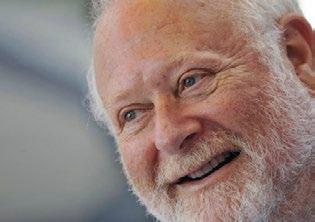
Jonathan Lynn is the cocreator and writer of Yes Minister and Yes, Prime Minister. His latest novel, Samaritans, is out now in paperback (£7.99, Endeavour Press).
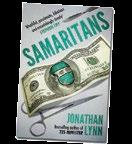
a selection of STAEDTLER products worth £50, plus two STAEDTLER classpacks of pencils for their school. The two runners-up in both categories will each receive a Kindle E-Reader.
Please submit your stories online at readersdigest.co.uk/100-word-story-competition by 5pm on February 19.
The editorial team will pick a shortlist of entries, which this year will be combined into a shortstory anthology and published by our partner lulu.com. The book will be entered into Lulu’s retail channels and promoted for one year. Winners of the categories will have an opportunity to write a longer version of their stories for inclusion in the book.
The three best stories in each category will be posted online at readersdigest.co.uk on February 27. You can vote for your favourite, and the one with the most votes wins the top prize. Voting will close at 5pm on March 19 and the winning entries will be published in our June issue. The entry forms and more details are on our website.
Now’s the perfect time to get your garden ready for the weather ahead. I’ve wasted countless days and a small fortune, trying to maintain tired wooden fences that looked dreadful and always required yet more work. Discovering Colourfence has changed things forever! It’s scienti cally tested and rated to ensure when professionally installed it can withstand wind gusts of up to 130mph. This year when my neighbours are wasting precious leisure time treating their fences with a variety of preservatives, I’ll be giving my Colourfence a quick hose down then sitting back to enjoy my garden. As the Colourfence system o ers a lasting solution to fencing woes it’s easy to see why many regard it as the premier fencing solution on the market. Colourfence won’t rot and it resists weather that quickly damages wooden
Nothing lasts for ever. Particularly timber fencing. That’s why Colourfence (with its 25 year guarantee†) is popping up in gardens all over the UK.
fences, it has none of the drawbacks of wood but plenty of added bene ts and it’s better value too! High quality AND great value – it’s a customisable product with a variety of colours and styles o ering a rst rate nish. The materials and tting are so good that Colourfence is guaranteed† for 25 years!
To nd out how Colourfence might bene t you and arrange your free no obligation quote, I strongly suggest you call 0800 644 4113.
Virtually maintenance free
Saves time and money –no annual treating required
Guaranteed for up to 25 years†
Unbeatable value compared to other fences
Versatile range of colours & sizes
No risk professional installation




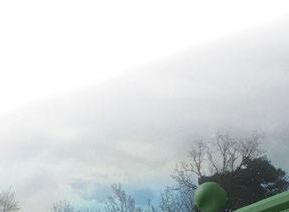






Anna Ryder Richardson Designer and Television Presenter turns the spotlight on the best garden fencing solution in the UK today. product on the “




Anna Ryder Richardson Designer and Television Presenter turns the spotlight on the best garden fencing solution in the UK today.






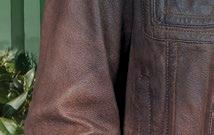
I honestly believe that Colourfence is the best general purpose fencing product on the market today! “ “








Read Anna’s Guide FREE and what others say...


? ? Which one is the COLOURFENCE owner
? ? Which one is the COLOURFENCE owner
Read Anna’s Guide FREE and what others say...




“We’re absolutely delighted with our new fence, which has totally transformed our garden space... very fair price and friendly, e cient service.”




“We’re absolutely delighted with our new fence, which has totally transformed our garden space... very fair price and friendly, e cient service.” Tom & Lesley – Cornwall. FREE FENCING GUIDE

Tom & Lesley – Cornwall. FREE FENCING GUIDE !
















I was sIttIng in an ornate dining room eating a breakfast of the Hapsburg Empire: cheeses, meats, smoked fish, black bread with apricot jam. Chandeliers hung from the ceiling. Framed landscapes adorned the walls. Outside, the Danube flashed in the morning sun.
Schloss Dürnstein was built in 1630. Like the rest of Wachau—a rural region some 50 miles west of Vienna that stretches for 20 miles along the Danube—the castle and Dürnstein village look like they belong in the middle of the last
The day before, I’d accompanied Toni Bodenstein through the neighbouring village of Weissenkirchen, where he’s the owner of the renowned Prager winery. When he was Bürgermeister (mayor), Bodenstein supervised the installation of the handsome new Wachau Museum in a 16th-century building. He showed me historical paintings of Weissenkirchen, then pointed out the same houses when we walked around the town. “If you take a photo today and compare, nothing has changed,” he explained.
Today’s winemakers, chefs and hoteliers are dedicated to preserving the old-world feel of the valley
millennium. With 47 rooms, Schloss Dürnstein is the largest and most luxurious hotel in a valley of inns and guest houses set along narrow streets that slope up from the river.
Otti, a server who’s been working at the hotel for nearly four decades, appeared holding a slim stack of newspapers. “Is that today’s International New York Times?”
I asked, having recognised the typeface from across the room.
She gently put a copy on my table. I glanced at the date. “But this is from yesterday,” I said.
“For us,” she replied tellingly, “today is yesterday.”
The Wachau valley was designated a Unesco World Heritage site in 2000, and has been famous since the 1950s for producing some of the world’s most compelling white wines.
The soaring popularity of Grüner Veltliner, now the country’s signature grape, has shone a new light on the region and given people a fresh reason to visit. Today’s winemakers, chefs and hoteliers are dedicated to preserving the old-world feel of the valley.
At Landhaus Bacher in Mautern an der Donau, Lisl Wagner-Bacher has run one of Austria’s most famous kitchens for three decades. Seven



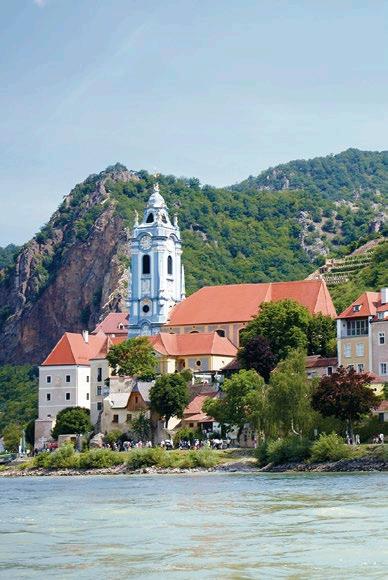 Clockwise from top left: breakfast at Schloss Dürnstein; Loisium Wine Museum; Schloss Dürnstein; dining at Pulker’s Heuriger
Clockwise from top left: breakfast at Schloss Dürnstein; Loisium Wine Museum; Schloss Dürnstein; dining at Pulker’s Heuriger
years ago, her son-in-law Thomas Dorfer took control and revamped the restaurant’s recipes. “The Wachau is slow-moving,” Dorfer admitted. “But to stay at this level, you have to keep reinventing what you do, even if it’s subtle.” Landhaus Bacher still serves food that is unreservedly Austrian. For dinner, I had a terrine of duck liver with rhubarb jelly and a salad from the garden, followed by local pike perch in parsley sauce: classic dishes that Emperor Franz Josef would have recognised. The cuisine was airy, refreshing, and intensely local.
“We’re in wine country, not a big
been formidable, but 38-year-old Nikolaus Saahs Jr, the older of the owners’ two sons, has lifted them even higher. One Riesling was the first Austrian bottling to earn 100 points from leading US wine critic Robert Parker’s Wine Advocate.
The property itself is arranged around a Celtic holy site.
A deconsecrated 12th-century church has been converted into offices for the family, who live nearby in the Nikolaihof section.
I sat down for dinner under a majestic linden tree, and fell into conversation with Nikolaus Jr and
We go to a beautiful spot, we eat and drink some wine, and make a party
city like Vienna,” Dorfer reminded me. “We want you to take your time, and forget life around you.”
another e ven I ng, I vI s I ted Nikolaihof, a winery, restaurant and inn just a few streets away. In 1971, it became one of the first producers to embrace biodynamic viticulture. This process involves organic agricultural practices—growing grapes without chemical treatments—but also more mystical ones, among them burying a manure-stuffed cow’s horn in the soil.
Nikolaihof’s wines have always
his brother, Martin. Their friends arrived, in from Vienna for the night. Before I could order, we all piled into a car and headed to the family’s terraced vineyard, perched above the Danube, where they’ve built a small wooden hut. Martin ducked inside and emerged with seven bottles, dark bread, and a plate of hams and cheeses. Girlfriends, daughters, and various in-laws joined our group.
We drank crisp Grüner Veltliners and a Klausberg Riesling, made from grapes grown where we were standing, that tasted of pear and orange peel. I could see the evening

beginning to settle over the streets of Stein and the lights from the outskirts of Mautern.
“This is nightlife here,” Martin said. “We go to a beautiful spot, we eat and drink some wine, and make a party.”
t he wachau’s trad I t I onal feel is even more striking when set against Langenlois, some ten miles north in the Kamptal. Though it has its share of historic churches and homes, many of its buildings are surprisingly cool. Acute-angled terraces jut from glass-and-steel cubes. Undulating
roofs and diagonal lines impose themselves on the landscape. Works of art line a three-and-a-half mile path that threads through world-renowned vineyards. It includes sculptures of a giant earthworm, a pair of scissors, and steel grapes designed to oxidise and streak with each rainfall.
Some of the area’s wineries and hotels also revel in this contemporary aesthetic. The starkly geometric Weingut Loimer, set on the site of a former Second World War aeroplane factory, consists of four black boxes scattered across the vineyard like giant pieces of stereo equipment.
Loisium Langenlois, where I stayed, looked like it was constructed out of Lego blocks.
That night, I dined with the owner, Willi Bründlmayer, at his ambitious Heuriger. This is a type of local tavern found in and around Vienna that specialises in robust lunch fare and house-made wine.
As we drank a fresh, young Grüner full of minerality and lime, and then a remarkable 2002 Riesling, he explained the cultural geography at work. Unlike the Wachau, the Kamptal looks northward, toward Prague. In design and mindset, the Slavic influence is palpable.

“The Wachau is close by, but the countryside is wilder here,” Bründlmayer said. “There’s more sense of risk and adventure.”
That’s also true in terms of viticulture. The region grows Grüner Veltliner and Riesling, but also Chardonnay, and Neuburger— more than 30 grape varieties in all. Bründlmayer, whose wife is French, even produces sparkling wine to satisfy her love of champagne. It was one of the many small choices the town and its residents made with no direct correlation to commerce. Rather, their decisions were aesthetic, emotional, even whimsical.
Krems an der d onau, a university town of some 24,000 people and the centre of the Kremstal region, serves as a middle ground between the more traditional Wachau and the forwardthinking Kamptal. It’s just seven miles down the highway from Langenlois. Its young, progressive outlook is an appealing contrast to the town’s breathtaking old buildings, imposing churches, and charming shopfronts.
I had planned to spend all day exploring it. But what had been only mist in Langenlois became a downpour in Krems, so I drove across the river toward the town of Rührsdorf until I saw Pulker’s Heuriger, an informal roadhouse run by Bernd Pulker, a former server at Landhaus Bacher.
Back home, I’d have dismissed this spot as a biker bar. It had a row of deer skulls along one wall, a tired Christmas wreath, and empty wine bottles everywhere. Yet there wasn’t a biker in sight. Instead, it was filled with families. Children sat at picnic tables, laughing and talking as loudly as they wanted while adults ate and drank heartily around them.
Pulker emerged from the kitchen. A tall man in his thirties with a heavy beard and wearing ornate lederhosen. He balanced six or seven plates in his arms, and distributed them with ease. Eventually, he brought me two kinds of sliced sausage, a salad of yellow potatoes in vinegar, and plump beans, each the size of a postage stamp,
served cold with chives. I devoured every bite.
I’d heard stories of Pulker’s enthusiasm for wine, and they proved to be, if anything, understated. Every few moments, he’d appear with a fresh glass and a bottle, and pour me something invariably compelling.
These were wines made for the Heuriger, low in alcohol and thirst-quenching, perfect for a Sunday afternoon. But Pulker is also a collector, and his cellar of 3,500 bottles is renowned in the community. “Guests say, ‘Make me some food and give me a little Henri Jayer Burgundy,’ or whatever it might be,” he said. “And they sit here in shorts and t-shirts and have an unforgettable meal.”
I’d had plenty of fine lunches and dinners over the course of my trip but this was the one I won’t forget. What set it apart, more than anything, was Pulker himself, an oversized presence who embodied the enthusiasm and hospitality of the region.
Sip franz hirtzberger, a 13th-century winery that turns out rich Grüners (hirtzberger.com); f.X. pichler, a futuristic winery where traditional Grüners rank with the region’s best (fx-pichler.at); loimer, known for intense Rieslings (loimer.at); nigl, supremely balanced Rieslings with 50-year life spans (weingutnigl.at); nikolaihof, pinpoint-precise wines are almost as memorable as dinner in the courtyard (nikolaihof.at); prager, complex wines (weingutprager.at).
Stay loisium Wine & Spa resort langenlois, doubles from £143 (loisium.com); Schloss dürnstein, doubles from £187 (schloss.at).
eat heurigenhof Bründlmayer, Walterstrasse 14, langenlois, specialty is deep-fried chicken with potato salad, £15; landhaus Bacher, Suedtirolerplatz 2, mautern, specialty is deep-fried caviar (£53); pulker’s heuriger, Ruehrsdorfer Kellergasse, Ruehrsdorf, specialty is roast pork (£11).
I can see him now roaring with laughter, looking preposterous yet altogether fitting in his traditional costume, striding toward my table holding up a bottle he’s eager for me to try. I’m pretty sure it’s a Riesling.
under pre SS ure
It would only take two hours to swim to the bottom of the deepest ocean…but the water pressure would compress you to the size of a tennis ball.

LifeBook offers the chance to capture your life, experiences and voice in a private autobiography individually tailored to you. Hundreds have used LifeBook to write their autobiography, including the late celebrity photographer David Steen

After a lifetime behind the viewfinder, celebrity photographer the late David Steen decided to turn the spotlight on himself. He wanted to create a record of his fascinating life and so he called upon the services of autobiography company, LifeBook. Working closely with them, he was able to bring together a wonderful collection of memories and stories, the result of which was Lucky Boy, a compelling written portrait that he could share with his children, grandchildren and friends.
The book charted Steen’s extraordinary journey, from the working-class son of
a Smithfield porter to one of Britain’s most respected photographers. While it’s hardly surprising that Steen saw himself as fortunate, his trip to the top was the result of hard work, persistence and charm. Steen’s career began when he started working as an office boy for the magazine Picture Post in April 1951. To a lad brought up in a cramped council flat in Clerkenwell, he had entered a world that seemed impossibly glamorous. The 15-year-old David was taken under the wing of the renowned Bert Hardy, the magazine’s chief photographer. “We became very close,” Steen recalls in his autobiography “I would go on lots of jobs with him as his

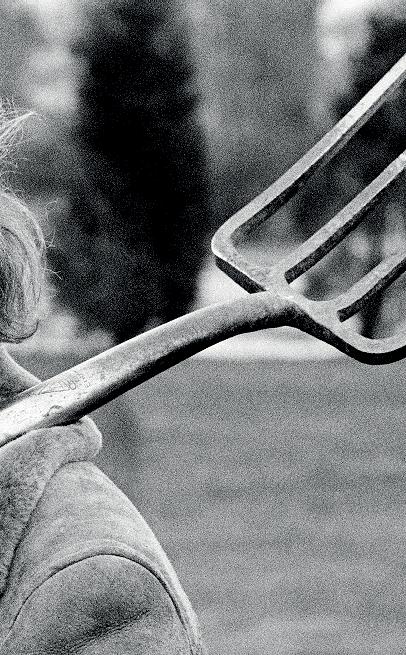
assistant, I cleaned his cameras and I soon copied his mannerisms.” What the young photographer had plenty of was drive, and the effort paid off because by the age of 18, the magazine sent him on his first foreign assignment—to photograph the film director, Otto Preminger, in Paris.
His professional career would see him capturing on film the essence of contrasting worlds; he moved from one to another with ease. “I remember photographing a little boy of about six in a slum in north Kensington,” Steen wrote. “It was just heartbreaking.” At the other end of the spectrum, some days would be spent in the glitzy world of the beautiful and the
famous. Undoubtedly, he naturally had an eye for a good picture and was never one to miss an opportunity. “Michael Caine had bought a large house near Windsor, so I thought it would be fun to photograph him posing as the ‘lord of the manor’. As I came down his drive, I saw a gardener with a pitchfork and a wheelbarrow, and when I slowed down, I saw it was Michael. I took the picture there and then.” On another occasion, in 1979, Steen was on an assignment in Rio de Janeiro when, at the bar of his Copacabana hotel, he found himself standing next to Great Train Robber Ronnie Biggs. “We came from a similar part of London and started chatting. By the end of the evening, after a few beers, I had persuaded him to let me photograph him, appropriately enough, on a railway line.”
After seeing a friend’s LifeBook, Steen made the decision to follow suit. He didn’t say a word to his family because he wanted the book to be a surprise for them, so much so, that when he presented the books to his family on Christmas Day, everyone was amazed and delighted. His comment at the time? “Without doubt, it’s the best present I could have given.” n
LifeBook is a chance to share your life story. The experience includes interviews with a trained interviewer, who will help select up to 60 photographs for your book. Your completed story is recorded in ten beautifully bound, 200-page hardback copies. To find out more about LifeBook, call 0800 999 2280, visit lifebookuk.com, or e-mail us at digest@lifebookuk.com
Festive lights, tempting aromas, seasonal music...Christmas markets delight all your senses




The Cologne Cathedral is an impressive backdrop to the brightly lit tree and market

Clockwise

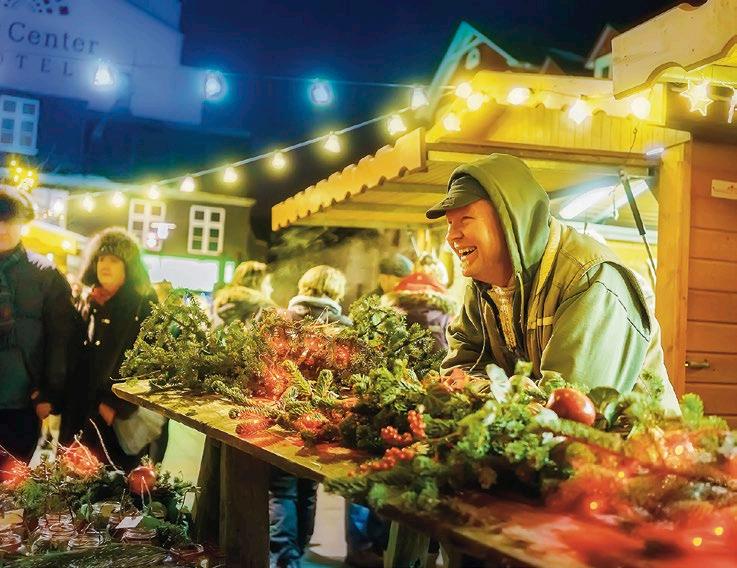 from above: Strasbourg, France, calls itself the “Capital of Christmas”, with a market dating back to 1570; colourful illumination at the Plaza Mayor market in Madrid; a cheerful merchant sells wreaths at his booth at the Reykjavik, Iceland market.
from above: Strasbourg, France, calls itself the “Capital of Christmas”, with a market dating back to 1570; colourful illumination at the Plaza Mayor market in Madrid; a cheerful merchant sells wreaths at his booth at the Reykjavik, Iceland market.




Clockwise from above: Father Christmas visits the market at the Marienplatz in Munich; gingerbread cookies express “Sorry” and “For my boss” in Polish at the Kraków market; the Christmas market at Tivoli, a beloved tradition in Copenhagen and a favourite with visitors.
 PHOTOS: ©DANIEL KARMANN/EPA/REX/SHUTTERSTOCK (NUREMBERG); © ANDREY VANDYSHEV/SHUTTERSTOCK (TALLIN); ©CULTURA RM EXCLUSIVE/SEB OLIVER/GETTY IMAGES (MUNICH); © SHUTTERSTOCK (KRAKOW)
PHOTOS: ©DANIEL KARMANN/EPA/REX/SHUTTERSTOCK (NUREMBERG); © ANDREY VANDYSHEV/SHUTTERSTOCK (TALLIN); ©CULTURA RM EXCLUSIVE/SEB OLIVER/GETTY IMAGES (MUNICH); © SHUTTERSTOCK (KRAKOW)

The world-famous Passion Play returns to the beautiful village of Oberammergau for its 42nd performance in 2020. Join Reader’s Digest for a once in a lifetime opportunity to experience this powerful “play of life and death” on the Austrian Delight nine-day guided tour of Bavaria and Austria
Since 1634, the most famous Passion Play in the world has taken place in Oberammergau. The premier of the 42nd Passion Play will be on May 16, 2020 and will continue to run until the beginning of October. With five performances weekly, this five-hour epic is a tradition, maintained and experienced almost without interruption for over 380 years—it takes place every ten years and portrays the suffering, death and resurrection of Christ. It’s regarded as the most important Passion Play in the world and around 500,000 people are expected to visit this beautiful village at the edge of the Bavarian Alps to experience the play in 2020.


In the middle of the Thirty Years War, after months of suffering and death from the plague, the people of Oberammergau swore an oath that they would perform the “Play of the Suffering, Death and Resurrection of Our Lord Jesus Christ” every ten years. At Pentecost 1634, they fulfilled their pledge for the first time on a stage they put up in the cemetery above the fresh graves of the plague victims, and it’s been said that not a single person fell victim to the plague after this time.
EXCLUSIVE OFFER: 5% OFF THROUGH READER’S DIGEST GUIDED TOURS
Today, the play is a polished production, but in its heart there remains a powerful act of worship symbolising an unwavering commitment to an ancestral vow that has continued throughout the centuries.
Due to a play law, everyone taking part must have been born in Oberammergau, or lived in the village for at least 20 years. Altogether, there will be more than 2,000 Oberammergau villagers taking part. From Ash Wednesday 2019, all of the performers follow the age-old tradition where they have to stop cutting their hair and beards so they have an authentic biblical appearance.

If you want a truly spectacular, once-in-a-lifetime experience then this is not to be missed. Tickets for the 2020 Passion Play are included in the Reader’s Digest nine-day Austrian Delight Guided tour. Our tour combines this unmissable performance with the opportunity to experience the breathtaking landscapes of Bavaria including Oberammergau and the Bavarian capital of Munich, and embrace the beauty of the Austrian Alps with quaint villages, pristine lakes and the fertile valleys of Innsbruck and Salzburg. n
FOR FURTHER INFORMATION
To find out more call 0800 804 8373 or visit readersdsigestguidedtours.co.uk
BY CATHY ADAMS
Cathy has danced in Rio, been microlighting in South Africa and hiked the mountains of Oman
Tell us about your favourite holiday (send a photo too) and if we include it on this page we’ll pay you £50. Go to readersdigest. co.uk/ contact-us
Visitors to the Reserve are required to be entirely selfsufficient
Jane Thomas from Plymouth camps out in Botswana’s Central Kalahari
I USED TO LIVE in Southern Africa and recently went back to Botswana to visit the Central Kalahari Game Reserve with my friend Oscar. Why? Because there’s nothing quite like the vast African wilderness…


Our jeep lurched along the too-hot-to-touch sand. With no AC and a temperamental engine, it was tough work. The dry heat was intense and the only respite came from using our precious water for brief bucket showers.
With no supplies available within the park—it was a sort of no man’s land populated by the occasional cow—it’s necessary to bring all your fuel, food and water with you.
We camped in small clearings. At the height of the dry season, shade was in scant supply, so we angled ourselves near an isolated, leafless tree. As the sun descended we drove towards the watering hole a few miles away, and were reminded just why we’d chosen to spend weeks inflicting this endurance exercise on ourselves. A lone lion paused his lapping to acknowledge our arrival. He yawned, then carried on drinking.
That night, sleeping on the roof of the jeep, we felt his roar as much as heard it. Those vast African skies offered the only hint that the outside world hadn’t come


to a standstill, as bright satellites whipped across the blackness.
In the morning we saw that the lion had walked on the road overnight, his paw prints pressed into yesterday’s tyre tracks.
We set off for another morning inching through the sand; another day of shifting landscapes and raw, wild beauty; another night lit by fireflies and shooting stars.
You’ll need to hire a 4WD in order to enter the Central Kalahari Reserve, and be completely self-sufficient. Return flights to Botswana start from around £600pp, via a connecting flight in Johannesburg (botswanatourism.co.bw).



have cities, beaches and tea terraces within their borders. December to May brings cooler temperatures and long, sunny days to explore the markets, skyscrapers and cathedrals of capital Manila. Or you could just kick back on Boracay island’s White Beach…
Bamboo Travel offers a 13-night tour from £2,925pp (020 7720 9285, bambootravel.co.uk).

■ SEE: THE VIENNA PHILHARMONIC ORCHESTRA This year marks the orchestra’s 175th anniversary. Catch the famous New Year’s Concert streamed live on screens in City Hall Square and in front of the Vienna State Opera House on New Year’s Day (wienerphilharmoniker.at).
■ STAY: THE GRAND FERDINAND HOTEL The new Grand Suite offers exclusive access to the roof, and overlooks St Charles’ Church and the Ringstrasse. Fortunately, the standard rooms are just as comfortably elegant, starting from £157 a night (grandferdinand. com/en).
■ DO: THE WELTMUSEUM WIEN This world museum hosts cultural treasures from across the globe. There are over 200,000 ethnographic objects across 14 galleries (weltmuseumwien.at/en).

Happy Cow, £3.99, Android, iOS. Vegetarians and vegans can easily track down good food with this app, which reviews restaurants and cafés in over 180 countries.
SHORT: Isle of Eriska, Scotland

LONG: Cempedak, Indonesia
Two hours from Glasgow is the 300-acre Isle of Eriska. Spend days watching Highland cattle graze and otters and seals splash about in the surrounding waters. Rooms start from £390 (eriska-hotel.co.uk). FOR
This private island retreat boasts 20 bamboo villas (all with plunge pools) overlooking the pristine Java Sea. It’s eco-friendly, too, so there’s no air conditioning… Villas start from £370 a night (cempedak.com).
With rising maintenance bills imminent, is it now time to legally exit your timeshare?
Timeshare.lawyer is an independent UK rm that undertakes exits from timeshare contracts on behalf of individual timeshare owners.
As specialists in this complex eld, we o er legal support and contract advice to all timeshare owners looking to terminate their legal and nancial obligations.
Since 2015, we have extricated our clients from over 5,600 timeshare contracts, making us the largest and most successful company in the UK.
We o er advice on 1,217 timeshare companies worldwide.

Our work involved in legally terminating timeshare contracts takes an average of 7 weeks. Many legal steps are taken to bring about the end of your timeshare responsibilities but we keep you informed every step of the way.







e minute that you sign up to Timeshare.lawyer’s services you needn’t pay any more management or maintenance fees.

Much needed advice from Timeshare Contract Specialists is now on hand. 0800 066 3321


We not only help with client exits, but we can o er advice on the merits of mounting a legal claim against your timeshare resort. Our latest win was a successful claim for £13,006. Our client was mis-sold their Florida timeshare ownership. Does this apply to you?
Our maintenance bills are too high
We’re worried about our resort being bought out and our charges increasing
We can’t get the desired exchanges
Our children do not want to inherit our Timeshare
We want freedom of choice
We want to travel to di erent parts of the world
We joined our timeshare under the agreement that we could exchange. is turned out not to be the case and it was getting more and more expensive. erefore we looked at the services of Timeshare.lawyer. e advisors were experienced and helpful and we would have no problems in recommending the service. We can now look at booking normal holidays at a fraction of the price.
Mr & Mrs Miller


Captive breeding has been a success. Now comes the challenge of easing pandas back into their native habitat
i crouch low in the grass to get a closer look at the animal lurching toward me. She’s about four months old, the size of a football, slightly bug-eyed, and no doubt as soft and fragrant as a puppy. The urge to scoop her up and squeeze her is overwhelming.
That adorability is one reason the giant panda is an international sensation as well as a cultural icon—and an economic gold mine in China. Now the whole world is watching China’s dogged attempt to keep pandas on the map.
Like many species, giant pandas have declined as the growing human population has taken over once wild lands. But since 1990, when the species was labelled endangered, the Chinese have perfected breeding methods and built a captive population hundreds strong.
What comes next in this bear’s conservation may decide whether the giant panda becomes a relic behind bars—or roams free in the wild.
To saTisfy THeir love for bamboo, which represents 99 per cent of their diet, giant pandas used to range across southern and eastern China and northern Myanmar and EvEn aftEr many yEars, whEnEvEr a panda is prEgnant or givEs birth hErE, EvEryonE is so joyful and ExcitEd
Vietnam. Now they’re found in perhaps one per cent of their historic range—China’s patchy mountains.
The Chinese government’s most recent panda survey, from 2014, reported 1,864 in the wild, 17 per cent more than in 2003. But Marc Brody, who founded the conservation nonprofit organisation Panda Mountain, warns that it’s tough to trust specific figures. “We may just be getting better at counting pandas,” he says.
In the meantime, the Chinese are furiously breeding their iconic bear in captivity. The early years saw many failed attempts, both at breeding and at keeping cubs alive.
With assistance from abroad, the Chinese turned things around. David Wildt, of the Smithsonian’s Conservation Biology Institute, was part of the international team that first worked with Chinese scientists on panda biology and husbandry. “Pretty soon they had masses of baby pandas,” he says. “In a sense we trained ourselves out of a job.”
Much of the action happens at Bifengxia Panda Base, or BFX, in Ya’an
City, Sichuan Province. This is where I had my close-up with cubs. Visitors here can see adult bears in outdoor yards—hunched over broad bellies, chomping messily on long bamboo stalks from enormous piles delivered several times a day.
Up a hill from these exhibits lies the staff-only building where bears in the breeding programme reside. Typically there’s a female panda in each enclosure, sometimes with a cub in her arms.
“Even after many years, whenever a panda is pregnant or gives birth here, everyone is so joyful and excited,” veteran keeper Zhang Xin told me.
In this setting, little about panda production is natural. To set the mood, breeders in China have tried “panda porn”—videos of pandas mating; apples on sticks to tempt males into mounting position; herbs; and even Viagra and sex toys. Zhang Hemin, executive director of the China Conservation and Research Center for the Giant Panda, which oversees BFX and two other panda bases, recalls an awkward shopping trip to an “adult toy store” in Chengdu. “I had to ask for a receipt to submit to the government for reimbursement,” he told me.
Now protocol includes artificial insemination. Part of the challenge is that female pandas are in heat just once a year and then for only 24 to 72 hours. Endocrinologists monitor hormones that can predict ovulation

Zhang Hemin—“Papa Panda” to his staff—poses with year-old cubs at Bifengxia Panda Base. Zhang directs many of China’s panda conservation efforts
and may inseminate several times to boost the chances of implantation.
Then, for months, females keep the keepers guessing. “It’s hard to even know if a panda’s pregnant,” says BFX’s director, Zhang Guiquan. “The foetus is so tiny that it’s easy to miss on an ultrasound.” Pandas can have delayed implantation, extremely varied gestation times, and quiet miscarriages.
This massive captive-breeding effort might suggest that pandas are simply sexually inept. Not so. For millions of years, wild bears have done the deed without human intervention, based on natural cycles, scent marking, mating calls, and complex social relationships that are mostly missing in captivity.
Blind, nearly hairless, squeaky, and 1/900 the size of its mother, a newborn panda is as needy as it gets. It will grow from around four ounces to four pounds in a month

“What we are asking them to do— basically have sex in a phone booth with a crowd of people watching— has little to do with real panda reproduction,” says Smithsonian ecologist William McShea.
Still, the Chinese are getting big results. In 2015, 38 cubs were born in China. (BFX produced 18 of them— its highest number yet.) In the panda nursery building at the centre of BFX is the immaculate incubator room, where the cubs, when not with mum or a surrogate mother bear, get 24/7 human care.
Visitors outside press their noses and cameras against the window, oohing and aahing over five fluff balls on the floor. Some of the cubs are napping; others are wide-eyed and wiggly, squeaking like dog toys.
Liu Juan, petite and shy behind square-rimmed glasses, is working a 24-hour shift, her second that week. She has a toddler who stays at home with family. “This job is more intense,” she says of mothering the pandas, “but I love being with them.”
Bottle-feeding the newborns, rocking, burping, responding to their bleats for attention, rubbing bellies to stimulate the gut, weighing and measuring, and keeping them from wandering—“the work is non-stop, a crazy amount,” explains Liu Juan. There’s massive pressure, she says, to keep the cubs alive: “They’re so important to China.”
MosT pandas at BFX will spend their lives in captivity, but elsewhere in Sichuan Province researchers have a wilder future in mind for these baby bears.
Hetaoping, a panda base within Wolong Nature Reserve, is a series of stone and concrete buildings tucked into a valley of the Qionglai Shan mountains. Since 1980, the Chinese have been working here with the WWF, the first Western organisation to cooperate on pandas with the government. WWF sent renowned biologist George Schaller to conduct research that became the basis for what we know of pandas today.
Zhang Hemin worked with Schaller in the field. “It was then that I learned to deeply love the panda,” he told me. Zhang had a favourite bear, a curious
female who stole his food one snowy night before taking over his tent. “She used it for months, coming back each night, leaving gifts of faeces in my bed.”
These days, select cubs are trained for life in the wild at Hetaoping. Keepers wear panda costumes scented with panda urine so that young bears don’t get used to humans. A cub here remains with its mother and is eased toward wildness. After a year or so, the pair is moved to a large, fenced-in habitat up the mountain where the mother can continue coaching her offspring. To qualify for release, Zhang explained, a young panda must be independent; wary of other animals, including humans; and capable of finding food and shelter unaided.
Adequate habitat for the bears’ release is a concern. Since the 1970s the Chinese have gone from 12 to 67 panda reserves. But many are very small, populated by villagers, and cut up by roads, farms, and other human constructions. More than a third of wild pandas live or venture beyond reserves’ invisible boundaries, says the Smithsonian’s McShea, where habitat may be marginal.
On a positive note, “poaching isn’t a problem here. Nobody is touching pandas,” McShea says. Hunting pandas was legal in China until the 1960s; now killing one could mean 20 years in prison.
A massive earthquake in 2008, which was estimated to have killed
90,000 people and destroyed part of Hetaoping, gave the government more reason to persuade villagers living in bear habitat to move. Officials built a series of lowland villages to house many of the displaced. But some refuse to let go of their old life. Li Shufang, a 76-yearold woman I visited in the simple home she shares with relatives, walks several hours a day, up and down the mountain, to tend to pigs and a garden where she lived before the quake. When I asked how she felt about making way for pandas, she spat back, “Why didn’t they move the bears instead?”
on a positivE notE, ‘poaching isn’t a problEm hErE: nobody is touching pandas,’ says william mcshEa
To turn the reclaimed land into bear habitat, locals are hired to plant seedlings where forests were diminished by logging or by earthquake damage. But the mountainous terrain makes it hard to plant on a large scale—so the landscape remains fragmented and, as a result, the panda populations do too.
Barney long, director of species conservation at Global Wildlife Conservation, says that only nine of some 33 panda subpopulations have enough animals to persist long term. Climate-change models warn that in the next 70 years, warming could reduce the remaining giant panda habitat by nearly 60 per cent. At least for now, rebuilding, connecting and protecting habitat may be the best focus for panda conservation.
Of the five pandas released since 2006, all wearing tracking collars, three are still out there. Two were found dead, one probably the victim of aggression from wild male pandas. Like breeding, rewilding pandas “will take trial and error, time and money,” McShea says.
Zhang Hemin is similarly confident: “I’ve had two important jobs in my life so far. To get pandas breeding, which is now no problem. Now we have to make sure there’s good habitat and put pandas in it.”
And once they’re running free and ready to mate? “We hope that they like each other, but we can’t interfere,” says Hetaoping keeper Yang Changjiang. “What comes next will be up to them.”
Over four days in November
Pandas being trained to live in the wild mustn’t get used to seeing humans. The Hetaoping caretakers even wear costumes that make them look and smell like pandas
wE hopE that thE pandas likE Each othEr but wE can’t intErfErE—what comEs nExt will bE up to thEm
2015, a Wolong cub named Hua Jiao (Delicate Beauty) is caught, given a final health check, fitted with a collar, crated, and driven 200 miles to the Liziping Nature Reserve. The reserve has a small panda population ripe for a new member.
Under a bright blue sky, four men position Hua Jiao’s cage facing the forest. Without fanfare, a keeper unlatches the door. At first the young panda stays put at the back of the crate, munching bamboo, her last captive meal. After today she’ll fend for herself. In a few years she may seek a mate and could add five or more cubs to the population over her lifetime. It’s not a gamechanging number, but for an endangered species with fewer than 2,000 animals in the wild, every individual panda cub counts.

Finally, with some coaxing from the keepers, Hua Jiao emerges, blinking into the light. And then, without a glance back at her captors, she lopes toward freedom.







Designed to make your life easier when stairs start to become too much, a Stiltz domestic lift will easily fit into any home. Often chosen as an alternative to cumbersome and unattractive stairlifts, a Stiltz Lift will transport 2 people comfortably so you can transform your life without moving home. A Stiltz lift is packed with sensors to keep everyone safe, it also plugs straight into a domestic socket, runs very quietly and uses less energy than a toaster!
• Quick and easy to install
• Advanced safety features
• Small footprint
• Battery back up
• Flexible positioning options
• Wheelchair model available
• Two year ‘no quibble’ guarantee
• Cost-effective and affordable
• Fast delivery available
• Install in a day*


Ilookedatmovingcostsandworkedout thataStiltzLiftwouldbecheaper.Thelift hasalreadymadethingsmucheasier. It’s been the best decision. Ms. Turner, Hereford “ “
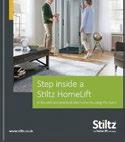


Learn to recognise the signs of money problems—and how to help without putting your own finances at risk
BY ANDY WEBB
Andy Webb is a personal finance journalist and runs the awardwinning money blog Be Clever With Your Cash
AT THIS TIME OF YEAR money can be tight, what with the extra costs of Christmas and increased heating and electricity bills.
The chance of financial pressures creating problem debt is more common than you might think. Money Advice Service research found one in six adults are at risk of crisis debt— that could very easily be someone you know, perhaps even your children.
To make matters worse, only 20 per cent of those likely to be at risk actually acknowledge the problem and seek help. So how can you be of assistance without putting your own finances at risk?
It isn’t always easy to know when people are struggling with money. They might actively try to hide the problem, but there are a few symptoms of debt you can look out for.
Do they seem anxious, withdrawn or depressed? Do they appear to have trouble sleeping or has their weight changed suddenly? If you spot any of these, it’s likely to be a sign that something is wrong, though not necessarily financially.
But coupled with the following, it’s very possible it’s money causing the problems: have they suddenly changed their spending habits? Are they making excuses to avoid spending money? Or are they living beyond their means?
Ask yourself if there’s been a recent life event that’s likely to have put pressure on their finances—whether that’s having children, losing a job or a big, unexpected cost.
If you spot any of these signs, then it’s time to address the issue.
The best thing you can do is start a conversation. Helping them to open up could be just the trigger that they need in order to acknowledge their money problem and start doing something about it.
Make sure you don’t tell them off—the purpose is to help them get out of a bad situation rather than punish them. Sharing times when you’ve struggled can let them know they aren’t alone.

Only lend what you can afford
It’s tempting to help out financially. But you need to make sure you don’t borrow money or put yourself in a dangerous position to do so.
The odd tenner here and there won’t be a problem, but there’s a huge risk to your savings and your relationship if you lend larger sums or take out guarantor loans.
Rather than trying to fix it yourself, sometimes the best option is to get some free and independent debt advice. Direct them to charities such as Step Change and the National Debtline, or the Money Advice Service. The specialists there will talk to them confidentially and help them find solutions.

IT’S ALWAYS WORRYING when you find out something you’ve purchased has been recalled on safety grounds. Despite high-profile cases such as the freezer that caught fire in Grenfell Tower, most recalls—from chocolate bars contaminated with nuts to unsafe push chairs—pass over the heads of consumers.
More often than not, I’ll hear about a recall thanks to my mum. Sadly she doesn’t have an easy way to keep informed—it’s really just a case of keeping an eye out—but there are a few places she’ll regularly look.
First up is at the retailer itself, particularly supermarkets. The recall notice is most likely to be just a sign pinned up near customer services. She’ll also keep her eyes peeled when reading newspapers.
There are a few websites she’ll look at too. Trading Standards has a list of recalled products, though it’s up to retailers and manufacturers to request listing on this webpage.
For bigger electrical items—the ones that can be really dangerous
as fire risks—there are a few ways to check up. You can check your items at the Electrical Safety First website, which lists every item recalled since 2007. You can register your appliance with the manufacturer, or at the wesbite RegisterMyApplicance.org.uk.
Finally, my mum is also a regular watcher of TV shows such as Watchdog and Rip Off Britain—both very useful sources of information when products have gone wrong.

Register any white goods you buy so manufacturers have your details and can get in touch if they need to.
MONEY WEBSITE OF THE MONTH:
Zeek
zeek.me
Ah, gift cards. So often the choice of last-minute buyers. In some ways they’re a good present—you can at least choose a gift you actually want. But there’s also a decent chance the card will be forgotten about, lost or expire before it’s used. In fact, the UK Gift Card Association says at least £5.40 of every £100 put on a gift card is never spent.

But there’s an easy way to avoid this if you receive a card you don’t want. The website and app Zeek allows you to sell unwanted gift cards and vouchers. You simply list your gift card and how much you want to sell it for, then if someone buys it you upload the digital codes or post the physical voucher to Zeek, who then send it on.
There’s a charge of up to 15 per cent of the selling price, though it can be as low as three per cent if you choose to get paid in Amazon credit.
n A partridge in a pear tree: £157
n Two turtle doves: £280
n Three French hens: £135
n Four calling birds: £448
n Five gold rings: £560
n Six geese-a-laying: £269
n Seven swans-a-swimming: £9,796
n Eight maids-a-milking: £43
n Nine ladies dancing: £5,637
n Ten lords-a-leaping: £4,111
n 11 pipers piping: £2,021
n 12 drummers drumming: £2,190
Total: £25,647


Rachel Walker is a food writer for numerous national publications. Visit rachel-walker.co.uk for more details
Turkey pie, Turkey curry, Turkey pasTa...there are lots of different ways to use up leftovers. This Japanesestyle ramen is surely one of the most comforting and cleansing. After so much seasonal gluttony, I’m always overjoyed by a simple broth and this recipe is ideal for warming up after a Boxing Day walk, or for taking the edge off a chilly winter evening.
Serves 4
• ½ litre turkey (or chicken) stock
• 2tbsp miso (optional)
• 1 thumb-sized piece of ginger, peeled and grated
• 2 garlic cloves, crushed
• 250g chestnut mushrooms, sliced
• 4 eggs
• 200–400g leftover turkey, shredded
• 300g fresh noodles
• 4tbsp soy sauce
• 4 spring onions, thinly sliced
• 4tsp sesame seeds
• 1 bird’s eye chilli, deseeded and thinly sliced
1. Bring the stock to a simmer. Whisk in the miso, if using, and then add the ginger, garlic and mushrooms.
2. Boil a separate pan of water, and cook the eggs for 6 minutes and 30 seconds—so the yolk has a jammy texture. Use a slotted spoon to lift the eggs out of the pan, and move them to a bowl of water, under the running cold tap.

Once they’re completely cool, peel. Halve them lengthways, and set to one side.
3. Put two ladles of the broth into a pan, and add the shredded turkey. Slowly stir it over a gentle heat, until the turkey meat is fully heated through, and then divide it between four bowls.
4. Meanwhile, simmer the fresh noodles in the broth according to pack

Got some leftover turkey gravy? Jackpot! Just tip it into the turkey (or chicken) stock for a rich and extra meaty flavour.
instructions (usually 2–4 minutes for fresh noodles). Use tongs or spaghetti servers to lift out the noodles, and divide them between the four bowls. Finally, stir the soy sauce into the broth, and then ladle it carefully over the hot noodles.
Top with the boiled eggs, and then garnish with spring onion, sesame seeds and chilli to your liking.
For easy ye T impressive c hris T mas hosT ing, why not look to scalable cocktails? Many can be pre-mixed in a pitcher—so there’s no need to mess around with egg whites as the crowds descend.
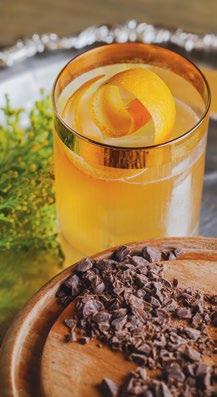
Whisky fans will appreciate this Scottish reimagining of a Dark and Stormy.
4 shots (180ml) whisky
Top up: ginger ale
Garnish: Thin slice of orange (serves 4)
Line up four highball glasses, and put 3–4 large ice cubes in each. Pour a shot of whisky into each glass, and top up with ginger ale. Stir, and then garnish with a thin slice of orange.
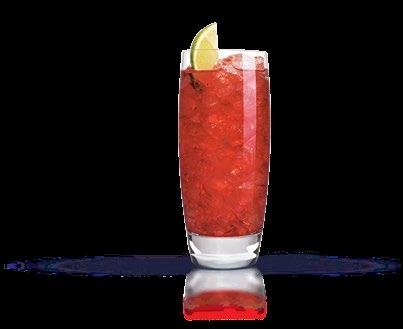
My favourite: a simple twist on a gin and tonic, using sloe gin or damson liqueur to give it a burst of colour and fruity freshness.
4 shots (180ml) sloe gin
Top up: tonic water
Prosecco punch is a great scalable option—but add a dash of something straight into the glass, rather than letting the fizz go flat in a bowl!
4tsp good raspberry sorbet
Top up: chilled prosecco
Garnish: 12 cranberries (serves 4)
Line up four champagne flutes, and put a teaspoon of raspberry sorbet into the bottom of each. Top up with chilled prosecco, and garnish with three cranberries.

Garnish: lime wedge (serves 4)
Line up four highball glasses, and put 3–4 large ice cubes in each. Pour a shot of sloe gin into each glass, and top up with tonic water. Run the lime wedge round the rim of the glass, and then drop it in as a garnish.

Fan of salted caramel? Miso channels salty, savoury notes to create a similar effect. The Japanese paste is made from fermented soybeans, but it also works wonders in a caramel sauce, and is a very popular way to use up leftovers.
Serves 6
• 110g butter, cubed
• 175g soft brown sugar
• 2tbsp miso paste
• 6 tablespoons of double cream
Melt the butter on a low heat. Add the sugar, and gently stir until it’s dissolved and you can’t feel the granules any longer. Still on a low heat, slowly stir in the double cream and then the miso paste. Just when it starts to bubble round the edge, take it off the heat. Tip into a pouring jug, and serve over ice cream.
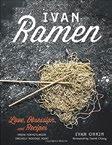
Ivan Ramen by Ivan Orkin, £20.40, Ten Speed Press. Inspiring ramen recipes from the iconic NY noodle shack.

Cooks’ Ingredients White Miso Glaze, £1.99, Waitrose. Best in class of supermarket’s ownbrand miso.

Organic Fresh White Miso Paste, £4.99, Tideford. Brilliant flavours from the South West soup company.

Homes and gardens writer and stylist Cassie specialises in interior trends and new season shopping
TRANSFORM
YOUR HOME into a warm and welcoming hideaway for the Christmas season, by decorating with rustic touches and introducing woodland motifs for a cosy yet stylish look.


3

1
Give your mantelpiece a seasonal update with this small standing stag ornament, £8 (sainsburys.com)

2
The branch wall hanging makes a stylish alternative to a traditional Christmas tree, £35 (debenhams.com)

4
This rustic wreath is made up of pine cones and faux berry sprigs, £12.99 (tkmaxx.com)
Store firewood neatly in this tapered rattan log basket, £80 (gardentrading.co.uk)


Give your house some Christmas curb appeal with these simple outdoor styling ideas


Stack chopped logs in the porch to later be used on the fire and complete the look with a snowy pre-lit wreath (£20, homebase.co.uk). Rather than draping your roof and walls with fairy lights, opt for a more sophisticated look with these LED 3D hessian light-up stars (£22 for three, diy.com). Dust the tops of plants and paving stones with a thin layer of fake snow to create a winter wonderland, or use a spray-on snow to frost the window panes in your front door. Outdoor lanterns like the Hanbury solar-powered design (£19.99, argos.co.uk), will give off a warm glow in the evenings.

This month you can enjoy espresso en route and read your text messages in a book

Olly is a technology expert, radio presenter
and podcaster
Sphero lightning mcQueen, £279.99
The original Sphero—a spritely plastic ball controlled via smartphone—was much talked about in the tech community, but never truly challenged the likes of Barbie and Lego as a must-have toy. But Sphero’s spin-off Star Wars droids brought the company huge success, and this tie-up with Disney is their best yet—a super-fast, spinny, wheely, wisecracking realisation of Owen Wilson’s character from Pixar’s Cars trilogy. Madly pricey, but it’s bound to make you smile.

apple app of the month:
Soon, free Every time I read the paper, spot a billboard or even meet friends for a drink, I find myself making mental notes about movies, books and music I should try

next. This app enables me to curate my cultural hit list whenever inspiration strikes. It helpfully tags each item: for example, adding cover art for albums. The Trending tab means you can also see what’s tempting other users.
ZapptaleS, from £29.99
Do you find yourself flicking back through your text messages, reminiscing? Well, now your WhatsApp chats with friends and family can be bound and printed into a souvenir book. Just sync your profile with the free Zapptales app, lay out your content using their intuitive website, and your keepsake gets sent to you in the post. Oddly, video messages are printed out as QR codes, as there’s no option to select screengrabs instead. But text and photos look great, and this is a quirky stocking filler.
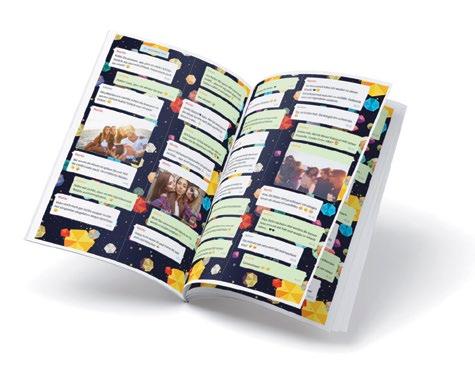
Wacaco minipreSSo nS, £80 Wallet, passport, sunglasses: these are my holy trinity of travel essentials— and, to be honest, the creation of a portable espresso maker seemed highly unlikely to change my view. However, this hand-operated, cylindrical pump turns out to be really well engineered, and a great little gadget to take on weekends away. You still need to pack coffee beans and a grinder…and have a kettle to hand! Nevertheless, it’s an impressive bit of kit and, in my caffeineloving opinion, a good cup of coffee is worth at least a little bit of effort.


apple app of the month: taSty, free Buzzfeed’s rapidly edited, step-by-step cookery videos are collated together in this mouth-watering app, featuring over 2,000 meal suggestions. It’s proudly American, which is bewildering at first—ingredients are measured in cups, the salt is Kosher, and coriander is called cilantro—but the recipes are easy to follow. Trust me, you haven’t lived until you’ve tried their Cinnamon Roll French Toast Bake.


Georgina is a fashion and beauty editor for numerous travel titles and a blogger at withgeorgia.com
ThErE arE many internal and external elements that cause the skin to age, from stress and nutrition to sun exposure and pollution. All these forces have an effect on cellular hydration, which is our cell’s ability to hold water. This is key to youthful skin. As we age our cells become less able to retain water—so our skin becomes less firm and plump as the years go by.
Hydration levels also drop during the winter months, causing the skin to appear as dull and grey as the weather. murad is known for their scientific approach to skincare. Their Hydro-Glow Food Supplements (£50, murad.co.uk) contain glucosamine and trimethylglycine—natural compounds that support cells’ hydration. The 60 per cent of your body that’s made from water will thank you!

spot on
■ Tackle acne prone skin with Green People’s new natural range of spotfighting skincare. OY! The Clear Skin Purifying Serum (£14, greenpeople. co.uk) is enriched with antibacterial tea tree extract and black willow bark to clear infection and soothe inflammation.

Lash LiFe
■ Eylure, created in 1947 by two Hollywood make-up artists, is celebrating its 70th birthday with a limited edition release of its first-ever false lashes set—perfect for adding glamour to the office Christmas party (£5.45, eylure.com).


■ This burgundy biker jacket oozes attitude and keeps the wearer cosy too! (£249, sosandar.com).

■ Pair burgundy layers with a berry-red scarf to keep you stylish and warm (£25, debenhams.co.uk).
■ Feel a million dollars in this velvety berrycoloured dress (£129, hobbs.co.uk).

■ Burgundy outerwear is a great way to add a dash of colour to your winter wardrobe (£150, debenhams.co.uk).


■ Keep the lady-in-red theme going with a pair of show-stopping heels (£159, hobbs.co.uk).

■ Bored of white shirts? Be bold with this berryblossom print (£49.95, whitestuff.com).
From a family Christmas in quarantine to festive romance, you can find a good dose of escapism in this month’s reads

James writes and presents the BBC Radio
4 literary quiz
The Write Stuff
As one of the characters in Francesca Hornak’s sparkling first novel points out, “Every Christmas is a quarantine of sorts”. For the Birch family, though, the quarantine is more literal than most. On December 23, their doctor daughter Olivia returns from treating an African epidemic and the rules are that she, her younger sister and her mum and dad must hole up in their Norfolk home for a week, with nobody allowed in or out.

In the circumstances, you might think the Birches’ answer to the traditional question, “How was your Christmas?” might be the equally traditional, “Very quiet”. You would, however, be wrong. All four are harbouring secrets of various kinds— and over the seven days, these come tumbling out in an exhilaratingly page-turning way. Even so, there’s a lot more to the book than just its skilful plotting. Hornak is particularly good at showing how, when families get back together, the individual members soon revert to their long-established roles—or, if you prefer, pigeonholes—with the grown-up children treating each other as they did when they were kids,
NAME THE AUTHOR
(Answer on p128)
Can you guess the writer from these clues (and, of course, the fewer you need the better)?
1. Her only novel begins, “I have just returned from a visit to my landlord”.
2. She died on December 19, 1848, aged 30.
3. Her pen name was Ellis Bell.
and parents reprising the parts they originally played 25 years before.

The Christmas Secret by Karen Swan (Pan, £7.99)
Every year since 2011, bestselling author Karen Swan has produced a thumping romantic read for Christmas—and her many fans certainly won’t be disappointed with this one. At heart, it’s a kind of Jane Eyre story, except that instead of a mousy governess, we get Alex Hyde: a power-dressing management consultant with a Mayfair flat whose idea of a holiday is a mindfulness retreat in Costa Rica.
We first see Alex aiding a tycoon in New York while wearing an “ivory crêpe Phillip Lim Dress” (Swan likes to inform us what her heroine is wearing). She’s then summoned to the Scottish island of Islay where the Kentallen malt whisky company is locked in a boardroom dispute. The obvious problem seems to be the allscowling, all-brooding CEO Lochlan Farquhar. But might the situation be a bit more complicated than that?
Well, you bet it might—because what follows is a richly spiced mix of almost every romance-fiction element you can think of. Lovers of gritty realism should look elsewhere but, if you fancy a shamelessly enjoyable Christmas wallow, this should hit the spot nicely.
n The Princess and the Christmas Rescue by Caryl Hart (Nosy Crow, £6.99, 2–5 years) Latest in the hugely popular Princess series, with Eliza saving the day for Santa.
n Santa Selfie by Peter Bently (Macmillan, £6.99, 3–6) Funny, charming tale of Father Christmas on holiday, constantly faced with fans and their phones. Comes with a photo frame for children to take their own selfies with the great man.
n The Christmasaurus by Tom Fletcher (Puffin, £6.99, 7–12)
Paperback edition of last year’s instant classic about the adventures of a boy and a dinosaur. Good for stockings.
n Father Christmas and Me by Matt Haig (Canongate, £12.99, 7–12) A human child adopted by Santa helps in the fight against the jealous Easter Bunny (!).
n Destroy This Book in the Name of Science by Mike Barfield (Buster Books, £9.99, 8–12)
Terrific activity book for the young scientist in your life. And (hurrah!) no extra materials required.

RD’S RECOMMENDED READ
Have you ever stopped to think about your Christmas traditions? A new books celebrates the fact that...
HEARTENINGLY, it seems, there are still plenty of ways in which Britain leads the world. Our spending over Christmas, for example, is twice the European average. In no other G7 country does the population increase its boozing levels during the festive period as much as we do. (Buck’s fizz for breakfast, anyone?) Despite several attempts to market Christmas crackers in the US, the Americans remain weirdly blind to the appeal of mirthless jokes, small plastic fortune-telling fish and paper hats that split down the side when you put them on.

the British Christmas is. (And by the way, it doesn’t start earlier every year: Marsden quotes a Times article from 1933 complaining about Christmas shop displays in October.)
For anybody tempted to take these achievements for granted, Rhodri Marsden provides a stirring and funny reminder of how wonderfully strange

A Very British Christmas; Twelve Days of Discomfort and Joy by Rhodri
Marsden is published by HQ at £9.99.
His book covers every aspect of the whole peculiar business—from fantastically inept presents (“Nothing says ‘I love you’ like eighteen stock cubes in a limited-edition tin”) to the newer tradition of newspaper articles about rubbish Winter Wonderlands; from the inexplicable popularity of Boxing Day sales to school nativity plays, where in recent times children have been known to play such notentirely-biblical roles as a policeman, a snowflake, a cowboy, a breakdancer,
a grandfather clock and Winnie-thePooh. Marsden also does a fine job of combining our nationally shared experiences with stories of individual family Christmas customs—many of them, of course, distinctly bonkers. As to the big question of why on earth we do all this, his answer is hard to argue with: because we really, really like it. We join Rhodri (left) here, where so many British adults spend Christmas— back in the old family home…
An essential part of my Christmas is for my dad and me to have a late night heart-to-heart about electricity. On the night of Christmas Eve, as I sit on the sofa staring at my phone, he’ll decide to go upstairs to bed, but before he does he’ll give me a detailed rundown of exactly which electrical appliances need to be switched off, which ones need to be turned off at the wall and which ones need to be unplugged. It’s unclear whether he’s trying to save a few pence on the quarterly bill or he fears that we’ll all perish in an electrical fire in the dead of night, but it’s a serious business and one I show respect for, despite inwardly wondering what the big deal is. Spending Christmas in someone else’s house, even if it’s a house you lived in as a child, requires great consideration and understanding as you adapt to new ways of doing things. Mealtimes may come bizarrely early or distressingly late. Central-heating
n Holidays on Ice by David Sedaris This brilliantly funny collection includes “Santaland Diaries”, Sedaris’s glorious account of a Christmas spent working in a New York department store as an elf called Crumpet.
n A Visit from St. Nicholas by (possibly) Clement Clarke
Moore Known as “Twas The Night Before Christmas”, this poem was published anonymously in 1823. A good dose of Christmas magic.
n A Christmas Carol by Charles Dickens It would be unthinkable not to include this on the list; the quintessential Christmas tale which still moves me on the umpteenth reading.
n The Corrections by Jonathan Franzen A wonderful novel, underpinned by the urgent need of a far-flung family to spend Christmas together.
n A Child’s Christmas in Wales by Dylan Thomas The disparity between my own childhood Christmases spent in Wales and Thomas’s colourful account doesn’t spoil my enjoyment.
thermostats might be set to ‘Greenland’ or ‘Congo’, depending on the tolerance of your hosts to extreme temperatures. Furniture may have been changed without your approval. The biscuits may be kept in a different
sleeping arrangements, ranging from the claustrophobic to the creepy to the cheerless. Ferociously offensive curtains, swirls of brown and orange, held together with bulldog clips in rooms only ventured into once or
At my parents’ house in Dunstable, I sleep in a single bed in my sister’s old room under a duvet decorated with flowers
cupboard. Your old bedroom may be referred to as an ‘office’ because your bed has been replaced by a desk and a wheezing Pentium 4 desktop.
Few things sum up the skewed sense of connection you have with the family home as the place you’ve been given to sleep. When I spend Christmas Eve at my parents’ house in Dunstable, I sleep in a single bed in my sister’s old room under a duvet decorated with flowers, and within reaching distance of several ageing soft toys from my childhood. Back in 2011, I posted a picture of this unsettling scene on social media, and it became a kind of cathartic catalyst; hundreds of people began sending me photographs of their own Christmas

AND THE NAME OF THE AUTHOR IS…
Emily Brontë. (Her only novel was Wuthering Heights, where that landlord is Heathcliff).
twice a year. Rooms with stepladders, plastic crates and several hundredweight of car-boot sale fodder: well-thumbed crime fiction, Sanyo cassette players, Ladybird books, broken remotes and upturned furniture partially hidden by tartan throws. Rapidly deflating airbeds, barely the width of the average human body, draped with fitted sheets that don’t fit.
According to the script, traditional Christmases don’t feature elderly grandparents crammed into bunk beds and nephews banished to attics with no heating or lighting. But we weren’t consulted when the Christmas script was written. If we had been, we could have told them to make urgent adjustments to incorporate haunted clocks that give us the creeps, or piles of jigsaws that have the habit of falling on our heads at three in the morning. That’s the Christmas we know, the Christmas we’ll always remember.

Katie Fforde is a hugely popular romantic novelist, who’s already had two number-one bestsellers this year. Her 24th novel, The Christmas Stocking And Other Stories, is out now, published by Century.
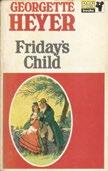
This is the first Georgette Heyer novel I read, and I soon became addicted to her Regency romances. I’d hole up in my room reading while pretending to my mother that I was busy revising schoolwork. I read her books over and over, returning to them in times of stress. I like to think my books also provide my readers with a place of safety where they know nothing truly bad is going to happen.
EDITED BY LOUIS
UNTERMEYER

I won this as a school prize when I was 14 and it was a turning point in my appreciation of poetry. I learned how the rhythm of words can affect meaning and emotional impact. A few years ago I sat on stage
while the inimitable Harriet Walter read out Patterns by Amy Lowell, one of the poems in this anthology. It’s such a beautiful, sad poem that I couldn’t stop the tears streaming down my face.

When I was 19 and newly engaged, I did a cooking course with a very eccentric French woman who always gave her soon-to-be married students this boxed set. Perhaps she felt sorry for our future husbands because we were all rather hopeless at cooking. Elizabeth David’s recipes were quite complicated and required a lot of shopping, but I battled on and in particular mastered her boeuf bourguignon. My husband and I are about to celebrate our 45th wedding anniversary so he must have liked it well enough... As told to Caroline Hutton
Win £50 for your true, funny stories! Go to readersdigest. co.uk/contact-us or facebook.com/readersdigestuk
While at the theatre with a friend recently, we were constantly asked to get up as one particular gentleman worked his way in and out of his seat and down the aisle to the exit.
The last time he tried to work his way back in the dimly lit theatre, he asked my friend, who was sat in the aisle seat, “Excuse me, did I tread on your feet getting in and out about five minutes ago?”
“You certainly did!” Sheila announced haughtily.
“Oh, good!” the man responded. “Then I’m in the right row!”
 Catherine hisCox, Hertfordshire
Catherine hisCox, Hertfordshire
my son Was filling in an application form as part of his school homework and asked me a question about the part where it said “sign here”.
Before I could answer, his younger sister chimed in, “You’re a Pisces.”
Pia ainsWorth, Manchestermy WiFe Was PayinG a lot of money to trace her family tree and my mother-in-law made no secret of
the fact that she didn’t approve. “She’ll have to pay even more later,” she said with a knowing look in her eyes, “to have it hushed up.”
Josh sUmner, Londoni Was ConCerned about my friend after she answered my call sounding miserable. “I’m not in a good place right now,” she told me.
Later I called her back to check in and she responded brightly, “Oh, I
didn’t mean emotionally! I was just at the gym.” eleri Webber, Cheshire
PoPPinG into my local chemist, I asked the assistant where the baby wipes were.
“On the bottom shelf,” she replied. Silly me, of course they were!
JaniCe reynolds, South Devon
my brother and his girlfriend (who has quite large, prominent ears) recently had a baby. When my grandma, mother and I went to visit for the first time, my grandma said in a relieved—and what she thought quiet—voice, “What lovely ears she has, nice and close to her head.”
Upon hearing this, my brother’s girlfriend said, “Of course, where else would they be?”
sarah hardinG, Tyne and Wear
i asked my mother to babysit my five-year-old son at her house while we went out for the evening. When we went to pick him up, my husband asked, “Have you had a good time?”
My son looked at his grandmother, then back to his dad, and asked, “Are you talking to me or Nana?”
hannah bryan, Liverpool
my Friend elle, who has five children, was having a sit down on the first day of the half-term holidays.
“I’ve tried cleaning the house whilst they’re all home,” she complained. “But it’s a bit like trying
to clean my teeth whilst simultaneously eating Oreos.”
sian roberts, Flintshire
i Was readinG my son’s religious education exercise book at a recent parent’s evening, and saw that he’d been asked to write about the gifts from the Wise Men.
He wrote, “For his birthday Jesus got gold and money but I would have given him an Arsenal Kit.”
maxine CooPer, London
i reCently visited an elderly uncle, who’s well known for his refusal to spend any money on anything. He prefers to fix any repairs himself.
When my young daughter visited the bathroom, she let out a scream and rushed back to announce, “Dad, there’s a snake in the toilet!”
We ran in to find that it was only a shoelace that had “escaped” from the tangled knot that had been holding the cistern together.
andreW berry, Lincoln
at the hairdressers recently, my hairdresser started talking about how she’d been involved in a medical trial. “It works because some of us are given the real tablets and the others are given a gazebo, but no one knows which they’ve taken.”
It might just be me, but I’m sure that I’d know if I was given a gazebo rather than a tablet…
ester neWton, Berkshire
never been easier to enjoy the World’s favourite magazine!



YES I want to subscribe to Reader’s Digest Magazine for just £3 for 3 issues (a saving of £8.37 on the shop price of £11.37 based on the cover price of £3.79 per issue). I understand that if I do not wish to continue receiving Reader’s Digest after my first 3 issues I can simply cancel my subscription by contacting customer services. If I do want to continue to subscribe after my first 3 issues I need do nothing and my subscription will automatically be renewed at the low rate of £4.99 for every 3 issues until I decide otherwise.

it pays to increase your
Add some zest to your vocabulary with this feast of nutritious words and phrases, just in time for Christmas. If you can’t stand the heat in our kitchen, cool off with the answers on the next page.
By Emily Cox & H E nry r at H von1. gustatory adj—A: uncomfortably full of food. B: relating to taste. C: rich and flavourful.
2. au gratin adj —A: cooked to medium rare. B: free of charge. C: covered with cheese and browned.
3. succulent adj —A: sun-dried. B: juicy. C: sipped with a straw.
4. mesclun n —A: mix of greens. B: small type of shellfish. C: Cajun dipping sauce.
5. piquant adj —A: in season. B: in small amounts. C: spicy.
6. chiffonade n—A: whipped margarine. B: shredded herbs or veggies. C: lemon pudding.
7. toothsome adj —A: chewy. B: delicious. C: hungry.
8. sous vide adv —A: without salt. B: on the side. C: cooked in a pouch.
9. culinary adj —A: of the kitchen. B: buttery. C: cage-free.
10. umami n —A: oven rack. B: chopsticks. C: savoury taste.
11. tempeh n —A: part-time chef. B: soy cake. C: fondue pot.
12. fricassee v —A: cut and stew in gravy. B: deep-fry. C: lightly sauté.
13. oenophile n —A: wine lover. B: food critic. C: egg fancier.
14. poach v —A: cook in simmering liquid . B: fry in a small amount of fat. C: heat slowly in a covered pot.
15. fondant n —A: food lover. B: cake icing. C: large bib.
1. gustatory—[B] relating to taste. “Here, try my new gustatory experiment—beetroot ice cream!”
2. au gratin —[C] covered with cheese and browned. “Is there anything better than onion soup au gratin on a cold, rainy day?”
3. succulent—[B] juicy. “For pudding, we had some succulent pears.”
4. mesclun—[A] mix of greens. “You call this a salad? It’s just a plate of wilted mesclun.”
5. piquant—[C] spicy. “The piquant smells from the Indian restaurant wafted out onto the street.”
6. chiffonade—[B] shredded herbs or veggies. “If you add a chiffonade of fresh basil, this frozen pizza isn’t half bad!”
7. toothsome [B] delicious. “Hattie makes the most toothsome cherry pie I’ve ever tasted.”
8. sous vide [C] cooked in a pouch. “Though preparing steak sous vide takes time, it will cook your meat evenly and retain the moisture.”
9. culinary—[A] of the kitchen. “Julia Child was a true culinary icon.”
10. umami—[C] savoury taste. “Umami is one of the five basic tastes, along with sweet, sour, salty, and bitter.”
11. tempeh—[B] soy cake. “Ezra, a devoted vegan, eats tempeh burgers and tofu dogs at barbecues.”
12. fricassee—[A] cut and stew in gravy. “Tired of turkey sandwiches and turkey soup, Hector decided to fricassee the leftovers from his Christmas bird.”
13. oenophile—[A] wine lover. “A serious oenophile, Adrienne was horrified when her date added ice cubes to his pinot noir.”
14. poach—[A] cook in simmering liquid. “For breakfast, Sarah loves to poach an egg and pair it with avocado toast topped with tomato.”
WorD oF tHE Day*
arriviStE
a person who has recently attained a high position without due effort or merit.
alternative suggestions:
“someone who always makes an entrance.”
“What your friends joyfully exclaim when you finally reach the ski slope.”
15. fondant—[B] cake icing. “Kelly was upset when she failed her cakemaking class because she slathered on too much fondant .”
voCaBUlary ratinGS
9 & below: apprentice
10–12: head cook
13–15: master chef
THIS YEAR SHE IS SAFE AND WELL AT BRANSBY HORSES.
She was just one of 144 horses that we rescued last year. With your help we can rescue and care for more horses that are suffering right now.
YOUR GIFT COULD HELP US:
• Feed a starving horse for a day - £3
• Provide warmth and shelter for a day - £10
• Provide life saving medication for a day - £30
IN ORDER TO DONATE, PLEASE:
• Phone 01427 788464
• Donate online at www.bransbyhorses.co.uk
• Text ‛PONY12’ + amount to 70070 (e.g. PONY12 £10.00)
• Return the slip below to: Bransby Horses, Dept. RD17, Bransby, Lincoln, LN1 2PH

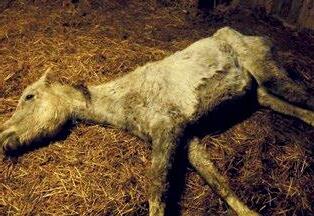
Challenge yourself by solving these puzzles and mind stretchers, then check your answers on p139.
Place stars in seven cells of this grid so that every row, every column and every outlined region contains exactly one star. Stars must never be located in adjacent cells, not even diagonally.
The Reds, the Golds, the Blues and the Blacks have a round-robin tournament wherein each team plays each other team once, for a total of six games. The Blacks won more games than the Blues, and the Golds lost more games than the Blues. The Reds tied the Blacks, the only tie in the tournament (a tie counts as neither a win nor a loss). Who won the game of the Reds versus the Blues?
Hidden in the array is a sequence of seven consecutive numbers in a straight line. Can you find it?
The layout for a cube has three symbols— , and —on three of its sides, as shown. Which of the three options at right represents the assembled cube?
ARITHME-PICK
Place one of the four basic arithmetic operations (+, –, ×, ÷) in each box to make a correct equation. Symbols may be repeated, and you don’t have to use all four. All operations are performed from left to right, ignoring the mathematical order of operations. The result at each step must be a positive whole number. What’s the equation? (GET
Which of the four boxed figures completes the set? 0
£50 PRIZE QUESTION
Answer published in the January issue








The first correct answer we pick on November 28 wins £50!
Email excerpts@readersdigest.co.uk
ANSWER TO NOVEMBER’S PRIZE QUESTION
Eastern, Nearest, Earnest.
AND THE £50 GOES TO… Stephen Willimott, Yorkshire
STAR SEARCH
The Reds. The Blacks tied one game, so they won a maximum of two games. They won more than the Blues, so the Blues won a maximum of one game. Since the Golds lost more often than the Blues, the Golds must have lost all three matches. The match that the Blues won must have been against the Golds, so they lost the match against the Reds.
Win £50 for every reader’s joke we publish! Go to readersdigest. co.uk/contact-us or facebook.com/readersdigestuk
OriOn’s belt is nothing more than a big waist of space.
Terrible joke. Three stars. seen On twitter
Puberty is the sickest joke God plays on us. So you’re just noticing members of the sex, “Girls, girls, ooh.”
Naturally you want to look your best, but God says, “No! You will look the worst that you’ve ever looked in your life!” cOmedian eddie izzard
it’s a dOg’s life
...is the amount hotel heiress Leona Helmsley bequeathed to her Maltese pooch, Trouble, when she passed away in 2007. Trouble’s luxury lifestyle included a full-time security guard, a diamond collar and her own stretch limo.
i’m gOOd at saying hellO, but I’m not very good with goodbyes, especially on the phone. I don’t know what’s happened, but every time I say goodbye I sound like an idiot. What is that? You sound like a child. You feel it coming when you’re on the phone.
It can be a very serious conversation, “Of course I’ll be at the funeral, I loved your father deeply, I’ll say a few words. Byeeeeee!” Why am I doing that? cOmedian michael mcintyre
Source: businessinsider.com $12m
“i’m thinking abOut getting a new job in a department store.”
“Selfridges?”
“I’ll sell anything.”
melvyn dOver, Dorsetthey always say that Albert Einstein was a genius. So how come whenever anyone ever calls you that, it’s meant as an insult?
“You don’t know where you parked the car? Good job, Einstein.” I really don’t think we’re honouring that man properly by using his name in vain in car parks. seen Online
i challenge yOu tO try saying “Whale oil beef hooked” without sounding like an Irish man swearing.
cOmedian jack deei was driving at 70 miles an hour the other day when I got stopped by a police officer who said, “Do you know the speed limit is only 55 miles per hour?”
I replied, “Yes I did, Officer, but I wasn’t going to be out that long.” seen Online
i gOt fired frOm the keyboard factory today.
They said I wasn’t putting in enough shifts. seen Online
my Other half stOle a lorry full of inflatables last week.
He’s going to lilo for a while.
tracy davisOn, Warwickshire
Lord of the Rings star Elijah Wood takes the best fan photos around (seen at boredpanda.com).




a devOut cOwbOy lost his favourite Bible while he was mending fences out on the range. Three weeks later, a horse walked up to him carrying the Bible in its mouth. The cowboy couldn’t believe his eyes.
He took the precious book out of the horse’s mouth, raised his eyes heavenward and exclaimed, “It’s a miracle!”
“Not really,” said the horse. “Your name is written inside the cover.” seen Online
i was having dinner with my boss and his wife and she asked, “How many potatoes would you like?”
I said “Ooh, I’ll just have the one please, Carol”.
She replied, “It’s OK, you don’t have to be polite.”
“Alright,” I said. “I’ll just have one then, you stupid witch.”
cOmedian tim vine
my friend just asked if I wanted a frozen banana.
I said, “No, but I want a regular banana later so…yeah.”
cOmedian mitch hedberg
what dO yOu call a cow with a stutter that can only produce chocolate milk?
“Cacao.” seen Online
the guy running the ski lift said it would cost me £50 to get to the top of the mountain.
I said, “That’s a bit steep.”
“Exactly,” he replied.
seen On Pinterest
The people of Twitter reveal the worst gifts they’ve ever received:
@samtwynam: “my dad once got me a shirt in his size and said he would take it if i didn’t want it.”
@chuckBute: “My parents gave me a Nintendo game. We didn’t own a console. they told me to go and play it at my friend’s house.”
@smittychic: “a book called The Little Ugly Boy from my grandparents.”
@_Daygo: “one year my mum gave us calendars that were only good for one more week. her response? ‘No wonder they were so cheap!’ ”
@moses2k13: “my dad gave me an iPhone box. i opened it to find a note inside that said, ‘get into college first.’ ”
We chatted to panel-show pundit, ed byrne
have yOu fOund Parts Of the cOuntry funnier than Others?
I go down best in Scotland and I enjoy performing there above anywhere else. I went to college in Glasgow so it feels like going home.
what’s yOur mOst memOrable heckle exPerience?
I was performing in Sydney on a really hot, sticky night and a woman shouted out, “Blah, blah, blah.”
I think there’s something about the Australian accent that made it particularly devastating.
dO yOu have any funny tales abOut a time yOu bOmbed?
Very early on in my career I was doing a bad five-minute open spot and smoking a cigarette throughout. At the end I said, “Well they say every cigarette takes five minutes off your life. It’s just a shame you don’t get to choose which five minutes.”
It was almost worth dying for the reaction that line got.
what’s yOur favOurite One-liner?
Lee Mack has a line that I’ve always been jealous of: “I used to think that I wanted three kids, until

I had two. Now I realise I only want one.”
whO insPires yOur cOmedy?
I showed my tour manager footage of Larry Miller doing a routine called “The Five Stages of Drinking”. He said he could see the influence.
if yOu cOuld have any suPer POwer, what wOuld it be?
As someone who dwells a lot: to reverse time. Anyone who says anything other than that is an idiot.
ed byrne is currently touring across the uk. visit edbyrne.com for details.

think of a witty caption for this cartoon—the three best suggestions, along with the cartoonist’s original, will be posted on our website in midDecember. If your entry gets the most votes, you’ll win £100
Submit to captions@readersdigest.co.uk or online at readersdigest.co.uk/caption by December 13. We’ll announce the winner in our February issue.

In an unexpected twist, our cartoonist can finish 2017 on a high! For just the third time this year, his caption has beaten all others to the top spot. he won an impressive 41 per cent of the votes with his words: “i just love the bank holiday getaway…four hours stuck behind a caravan.”
Special mention must go to ron hardy, who came in second with “i can’t shift this feeling that we’re adopted.” We eagerly await next year’s captions!

Interview: Sir David Jason
the actor on learning from con artists.

Why the right kind of popularity is the secret to happiness.
Plus
• the Families Who Welcome refugees
• how to Let Go Of regrets
• hong Kong: 20 years Later




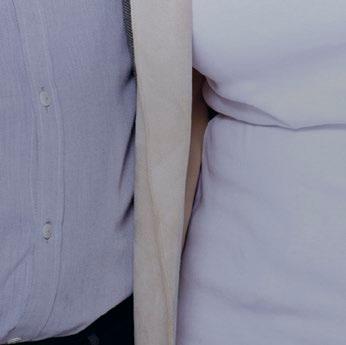



















Whatever it is, we designed the powerful Gtech AirRam Mk.2 to make it disappear: The cord that holds you back. Gone. The dust cloud when you empty the cylinder. History. And it weighs just 3.5kg (7.7lbs).
The AirRam Mk.2 outperforms the original in every test, with cleaning performance proven on both carpet and hard- oors. And you can still glide from one to the other with no settings to change. The AirRam Mk.2’s powerful rotating brush bar also makes it ideal for pet hair, even lifting troublesome embedded hair from your carpet. The new LED searchlights mean there’s now no place for dirt to hide.
The AirRam Mk.2 is equipped with Gtech’s patented† AirLOC system. It effortlessly picks up larger objects, but is uniquely designed to also lift dust and ne debris, leaving your oor pristine.




When we launched the original AirRam in 2012 the Daily Mail said “10/10 – Is this the best vacuum cleaner ever?” Well now we’ve made the AirRam EVEN BETTER!
The AirRam Mk.2 collects the dirt into the head of the vacuum, moving it just 4cm before compressing it into the unique snail-shell bin. This compression technology gives the AirRam Mk.2 enhanced dirt storage capacity. You can then eject this tubular bale straight into the bin with a satisfying slide of the dirt ejector arm.
Thanks to its revolutionary design, which does away with so many bulky parts, the AirRam Mk.2 weighs just 3.5kg (7.7lbs). The AirRam Mk.2’s edge cleaning technology helps you get into those awkward corners and makes it great for cleaning the stairs.
AirRam Mk.2’s 40 minute* run-time gives you the ability to clean two average UK homes on one 4-hour charge. A 1-hour short charge will deliver an additional burst of cleaning time.



Introducing the Gtech Multi, our innovative cordless handheld vacuum – AirRam’s perfect partner.






We are also offering the AirRam and Multi for a combined price of £299, with free delivery. That’s a saving of £49 on the combined RRP (AirRam £199 and Multi £149). Call or see website for details.